Kanne Brottrunk
Written by Fulmina Institut
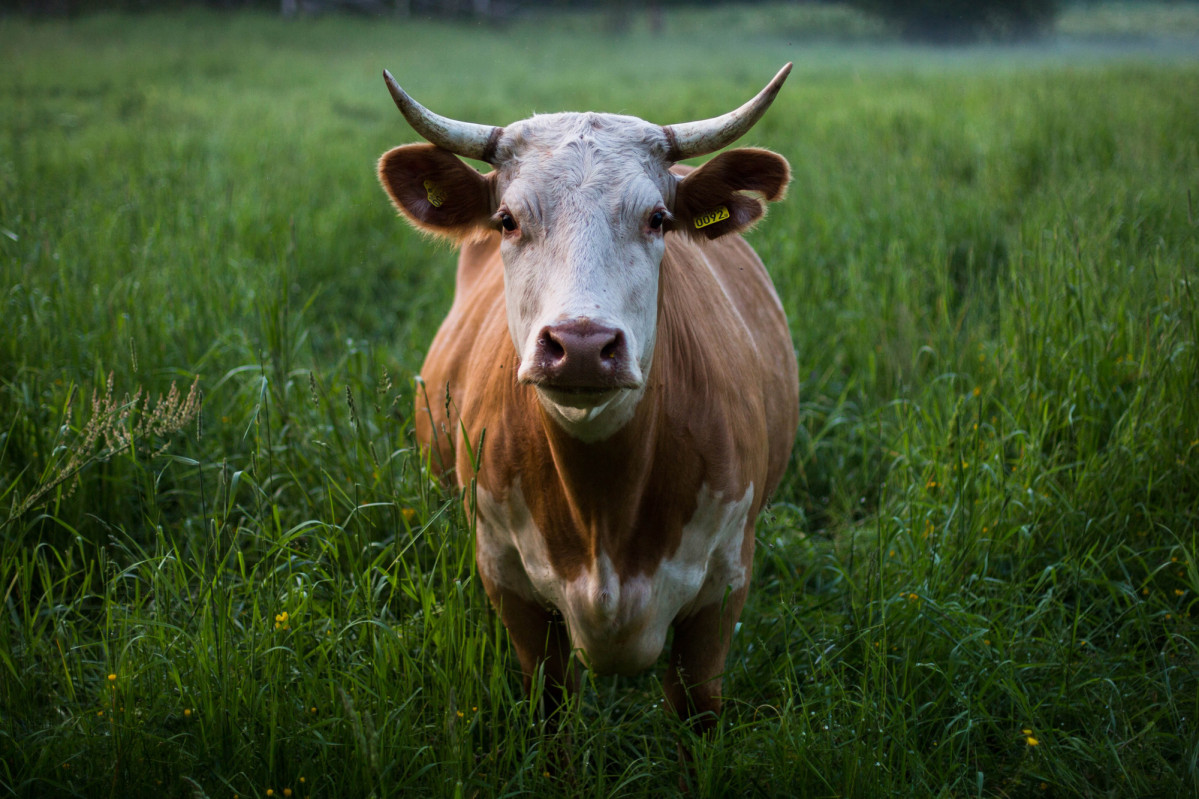
Presented by Fulmina Institut
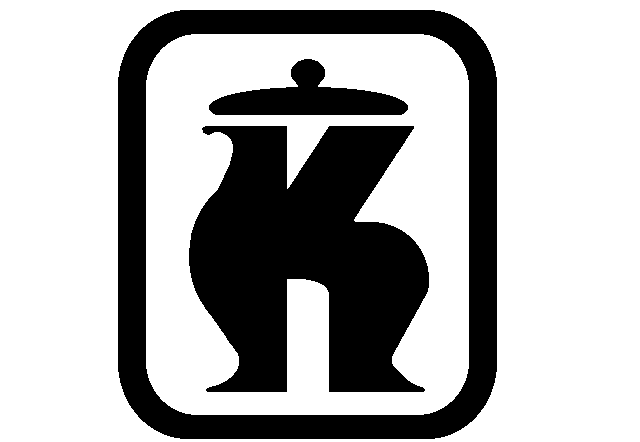
KANNE-BROTTRUNK®
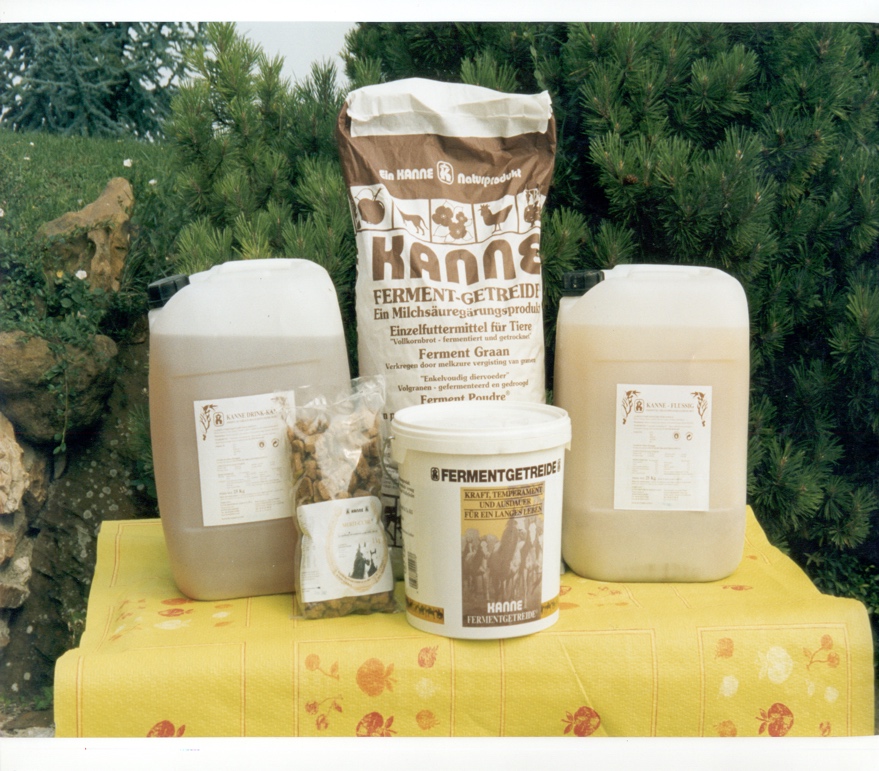
| For Agriculture
| For Human | For Environment | For Animals |
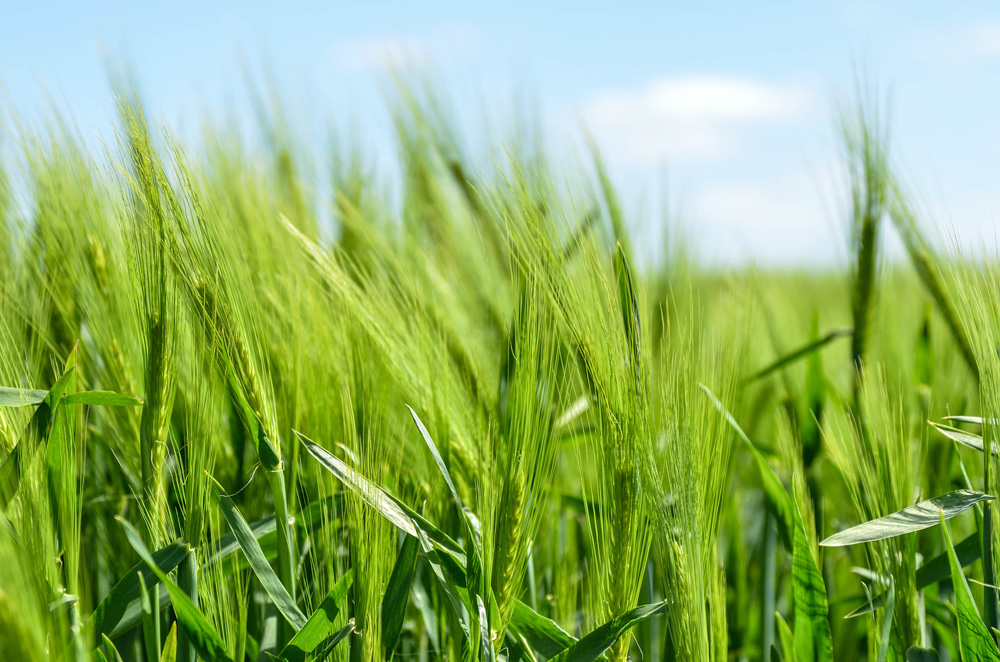 |  |  | 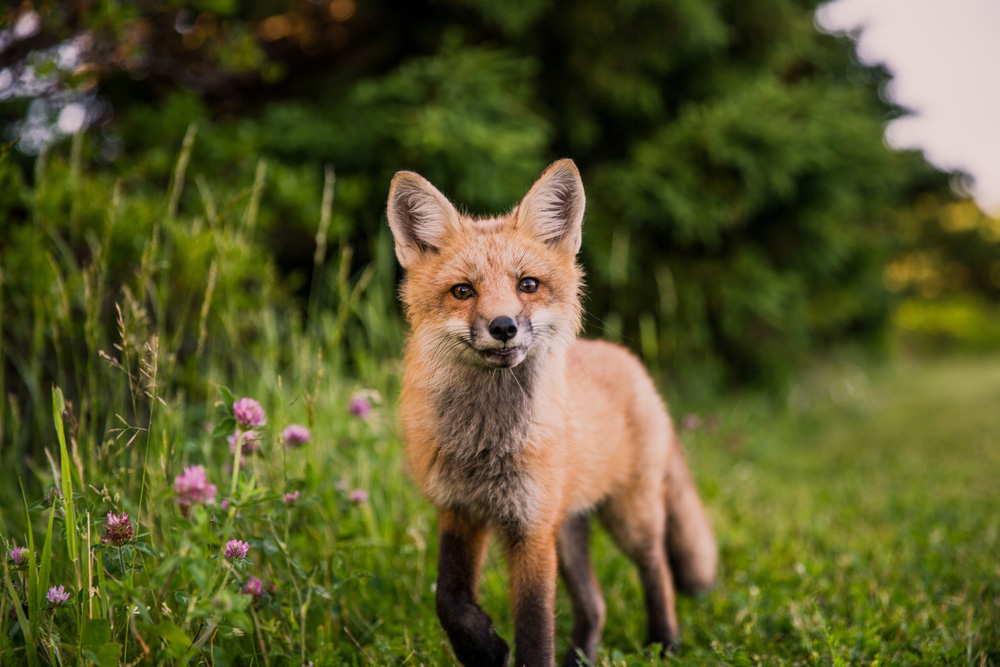 |
For more information : Contact Fulmina Human Resources Here
The subject of agriculture
Agriculture, the primary sector of our economies, lies above all in the empirical knowledge acquired by farmers all over the world.
Since the Neolithic period, the first acts have been the domestication of plant and animal species most adapted to eco-systems for which development has been favoured in order to meet the needs of society.
Even today agronomy, is based on adaptation to the ecological conditions prevailing in the regions of crops and livestock.
The aim is to ensure that within these ecosystems the best profit can be made from carbon, nitrogen and mineral cycles for the production of food calories, proteins, vitamins, textile fibers and medical molecules without necessarily cause poor performance.
However, by oversimplifying ecosystems, monoculture contributes to weakening them and even devastating them.
While scientific concepts have helped to understand and interpret agronomy practices, they have forgotten their "Fathers." These full brains overshadowed the horizon that was to loom behind the green agri-food revolution and the spirals of standardization and yield.
Wouldn't the tradition of agronomy have any basis for common sense beyond value judgments guided by the effects of globalization?
Environmental impacts include: pollution of water, air, soils by plant protection products, eutrophication (too much nutrient supply due to human activities on algae), regression and degradation of soils particularly by metals, soil erosion also causing damage to infrastructure, the extinction of plant, animal, marine species, environmental health problems, etc.
At the dawn of the 21st century, sustainable performance is an essential public safety issue with the foundation of preserving the quantity of production but also the quality. Remember not so long ago the taste of fruits, vegetables, meat, bread! Pesticides are certainly responsible, for the impoverishment of crop land and livestock probably but above all intensive production and its permanent control by state or government agencies. All the crops on the planet are concerned with wheat, rice, spelt, rye, oats, corn, soybeans, but also market gardening, horticulture, viticulture, etc.
Producing well on healthy land with natural elements does not mean financial loss or poor performance.
Natural products to fertilize soils, enrich the soil, bring the essential trace elements during cultivation or breeding exist. These products are organic, respect the environment and will allow to rediscover the agricultural flavors sometimes forgotten. One of these supplements is called:
« BROTTRUNK KANNE » We're going to introduce him to you.
What is the Kanne Brottruck
It is a fermented bread, made with 3 certified organic agriculture cereals.
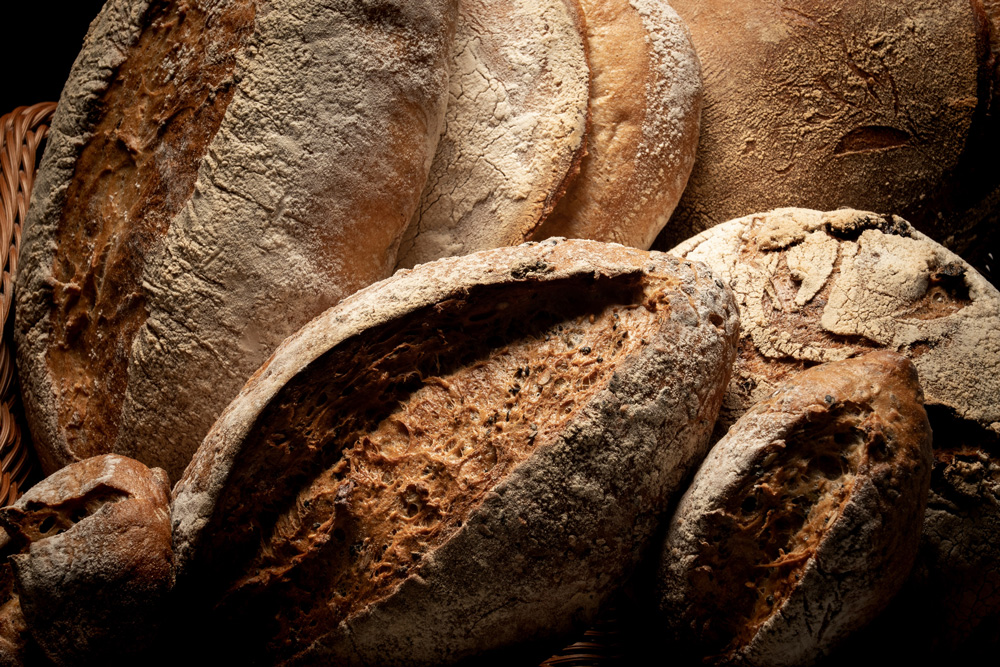
The German Master Baker Wilhelm Kanne first designed it to offer a lacto-fermented drink without dairy origin, especially with the particularity of remedying our problems related to an often unbalanced diet, a modern lifestyle, a stress often not perceptible, devious, but permanent.
This ferment is available in several product families for organic and environmental applications.
This lacto-fermented is called in Germany:
"THE ALIMENT OF THE GOOD TO MAN AND THE ENVIRONMENT"
This whole meal sourdough bread undergoes a long lactic fermentation and, unlike conventional lactofermented products, the two acids D- and L are balanced, which makes this natural product very efficient, it is referenced "ALIMENT COMPLEMENTAIRE ". The slightly viscous liquid mass is only extracted from the fermentation tanks from a pH. less than 3.0. No products are added to the KFG Kanne ferment getreide (grain ferment).
The raw, viscous liquid product, extract containing all fermented raw materials, is marketed under the name Flüssig. It is mainly used as a direct food intake but can also be incorporated into the basic ration. It is also used in slurr deodorization and incorporation into organic materials to be composted. It requires a good mix beforehand and can be diluted with the necessary volumes of water. The dry substrate, separated from the raw product, dehydrated with gentle methods, and then finely ground is marketed as FERMENT POWDER.( Fermented grain) It comes in the form of a slightly tangy brownish powder, naturally balanced into enzymes, ferments, yeasts and trace vitamins. It can be distributed pure according to the indicative dosages per animal/day or incorporated into the flour food (do not granulate): Maximum temperature 45-48oC. After the separation of the thick mass: the filtered liquid is presented in a form that allows its addition to drinking water: the Drink-kan.
Drink-KAN, is specially designed for poultry, rabbits and piglets in post-weaning, these species have small troughs and are in principle equipped with dose pumps for the distribution of water of daily water.
For practical reasons, in order to obtain a larger distribution, the two liquid products, the thick Flüssig and the Drink-Kan can be diluted with several volumes of water at the time of distribution to the animals.

Under the name BROTTRUNK PLANTES, it is used for plants and crops where it is referenced under the No. LS 00 5232-00-00 and No. LS 00 5231-00-00 for the FLÜSSIG as reinforcement for the vigour of the plant, (Pflanzenst-rkungsmittel) approval biologische Bundenanstalt D 38104 Braunschweig dated 29.10.2001.
Its particularities
An amber liquid, slightly acidic, which goes by its composition always 100% natural after the very long lactic fermentation, restore balance in an organism or culture by a permanent seeding of enzymes, lactic bacteria (initially inactivated), yeasts and trace elements assembled naturally.
A long time ago, 460 years B.C., Hippocrates launched us through the centuries:
"LET YOUR FOOD BE YOUR REMEDIES"
Its applications
KANNE BROTTRUNK can be used in a variety of applications, whether it is plant, environmental, animal or for human consumption.
Kanne Brottrunk is used;
a) Food supplement
Cattle: Dairy cows, Farmed calves, beef, bulls
Goats: Goats, Bouquetins
Sheep: Farmed lambs, Dairy sheep, Aries
Porks: Breeding sows, Verrat, Piglets and fattening pigs
Poultry: Laying hens, Flesh chickens, Roosters, Ducks, Turkeys, Rabbits, Geese, Guinea fowl, Quail, Pigeons etc...
b) Organic Fertilizer
Soil Rehabilitation: Cereal crops, market gardening, Plantations
Treatment of sledge: Animals, Vegetables
Garden Market: Vegetables, Fruits, Flowers
Culture of cereals: Wheat, Barley, Oats, Rice, Corn, Soybeans, Beets, Potatoes, Peas, Spelt, Millets, Saracens, Rye
Horticulture: Plants for food, Pleasure plants
Arboriculture: Mouth fruits
Viticulture: Wines, Table Grapes, Dry Grapes
c) Treatment of the Environment
Muds and lagoons: Water purification, Lagunage
Water and Ponds: Rehabilitation of Poor Waters, Polluted Waters
Hydrocarbons: Fuels Diesel, Gasoline or other Chemicals
d)Human Health
Global immune system strengthening,
Stimulation of digestive functions,
Resistance to colonization,
Vitamin synthesis,
Acid-base balance regulation.
Utilisation Advice
As described above there are three different formulations depending on the application we want to use.
For example, for land rehabilitation use we will use: Kanne Flüssig
For breeding use we will use: Drink-Kan
For use on plants we will use: Brottrunk Plants
It is sometimes recommended to use two products together as for example on planting: In soil preparation: Kanne Flüssig & In watering nebulization or drip: Kanne Plants
Comments :
By certifying organic farming these products have the right to bear the new logo: "EUROPEAN BIOLOGIC AGRICULTURE" KANNE products are allowed in organic farming, red label production, regional certifications and other traceability requirements, in addition, cereals used in the manufacture of KANNE® are the subject of an G.M.O. absence certification in each campaign.
Organic Agriculture logo applicable on all KANNE products on both human and animal food:
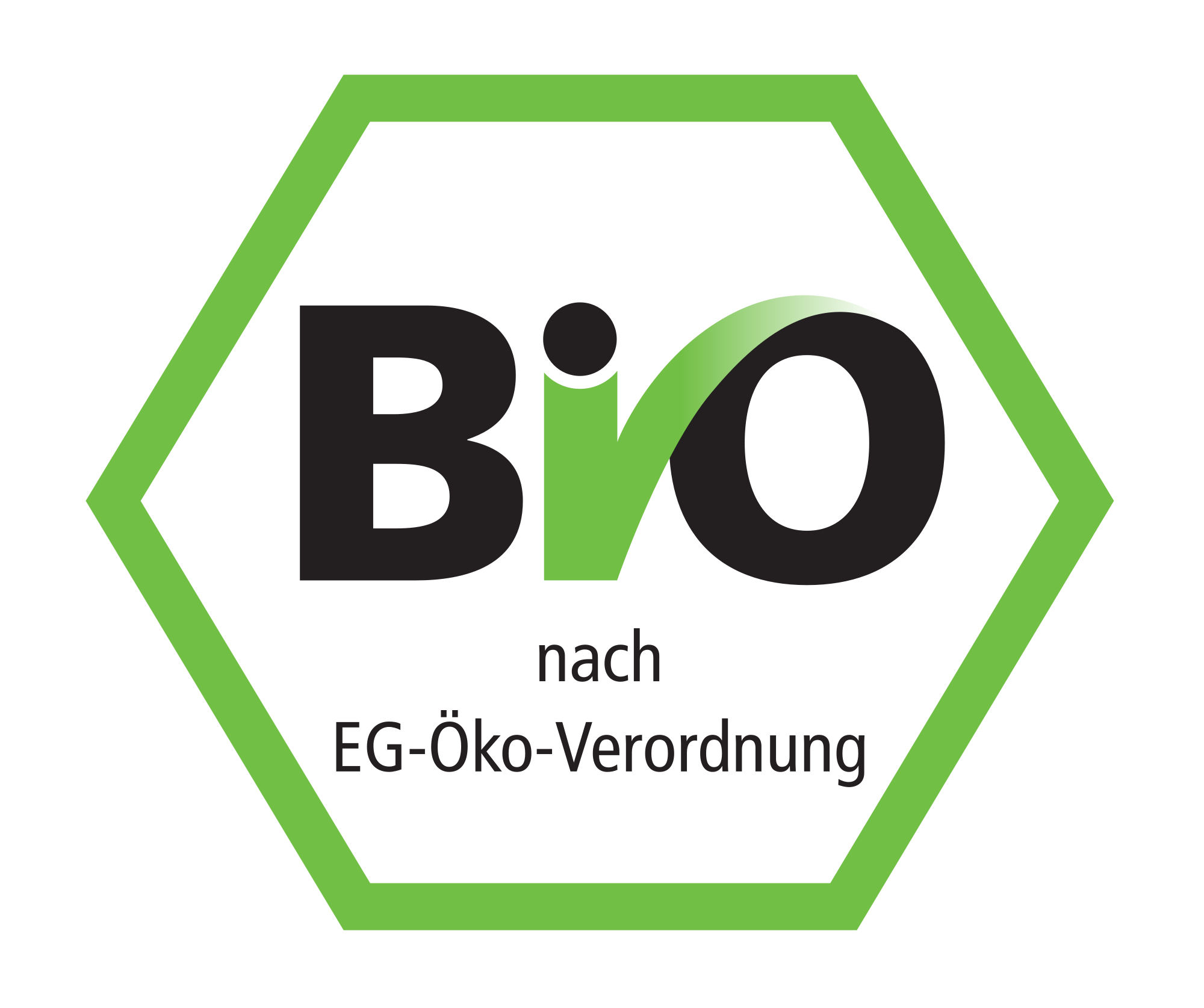
The Kanne and the Bovines
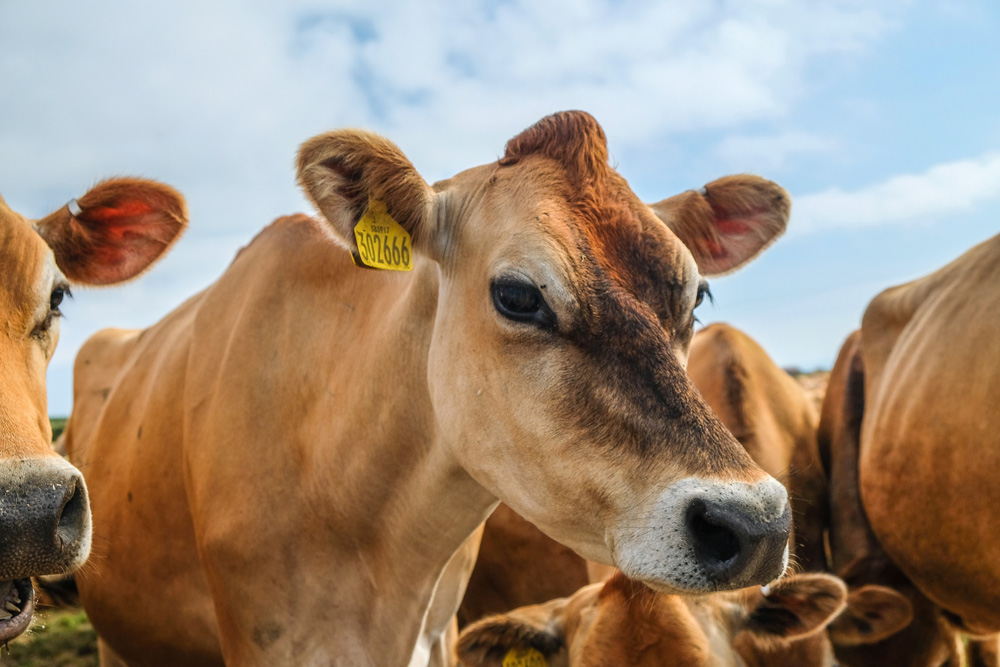
Cattle are present in all latitudes. Their global population is 1.5 billion head (including 1.4 billion tattoos and 150 million zebus). They are bred for the work they provide, still important in underdeveloped countries, for milk, which is an important source of fat (butter) and for meat (except in India). They also use their skin (leather), horn, dung, which is a fuel used in some countries, and a fertilizer.
The feces of ruminants called "dung" have the property of being moist and rich in undigested microbial debris. It is therefore important that these animals are healthy.
Information on the use of the ferment KANNE powder and Liquid Flüssig.
In direct supply of feed for the Cattle we recommend the Kanne Flüssig.
a) Ground Results
This cereal ferment, obtained after a slow lactic fermentation (3 to 6 months), while the classic lacto-fermentations e.g. sauerkraut and silage last from 21 to 23 days; has a very interesting feature on ruminants: the two lactic acids D- and L+ (dextrogyre and levogyre) are balanced (the only product of this type known to date).
At first, after transposing what worked well on humans to monogastric species (pigs and poultry in particular) I discovered quite by chance in a Breton pig farmer that he had restored a cow after a calving with big problems with a very high dose of Kanne Flüssig.
This finding completely called into question the words of a high-level nutritionist who had assured me that this product could not work on ruminants (poly gastrisks) when we only used it on fattening calves. With this certainty, we started with breeders who helped us to better quantify the best dosages on farmed calves, feeder cattle and dairy cows.
The first striking finding was optimal appetite in all cases with a distribution of liquid Flüssig directly on the base ration or concentrate and even in full ration. This appetite allowed us to consume forages that were practically refused by the animals, for reasons of poor fermentations, mould and various alterations. With regard to moulds, we have found with the Flüssig a strong neutralizing action of the latter both on fusariasis and undesirable aerobic fermentations in conventional silages or pre-fanage.
b) Kanne's characteristics
First of all, its pH at 3.0 is very low and gives this product a very high stability and longevity. Very easy to use, it is used both in 8-day cures and continuously on high-performance dairy cows (VL HP) that have a high production potential and require all the more natural and non-aggressive assistance to digestibility.
It's not a drug, so we're working on redoing the environment in the long term, which was difficult to apply at first, we had to persuade breeders who didn't believe it, because their advisors were very good at arguing about more with rapid actions unfortunately in the short term (only). The results of Kanne are measured only in the medium and long term, this is a great surprise to experts since the most technical response for the breeder should be provided by the animals and not by the technicians and advisors of various companies.
c) Analytical Constituents
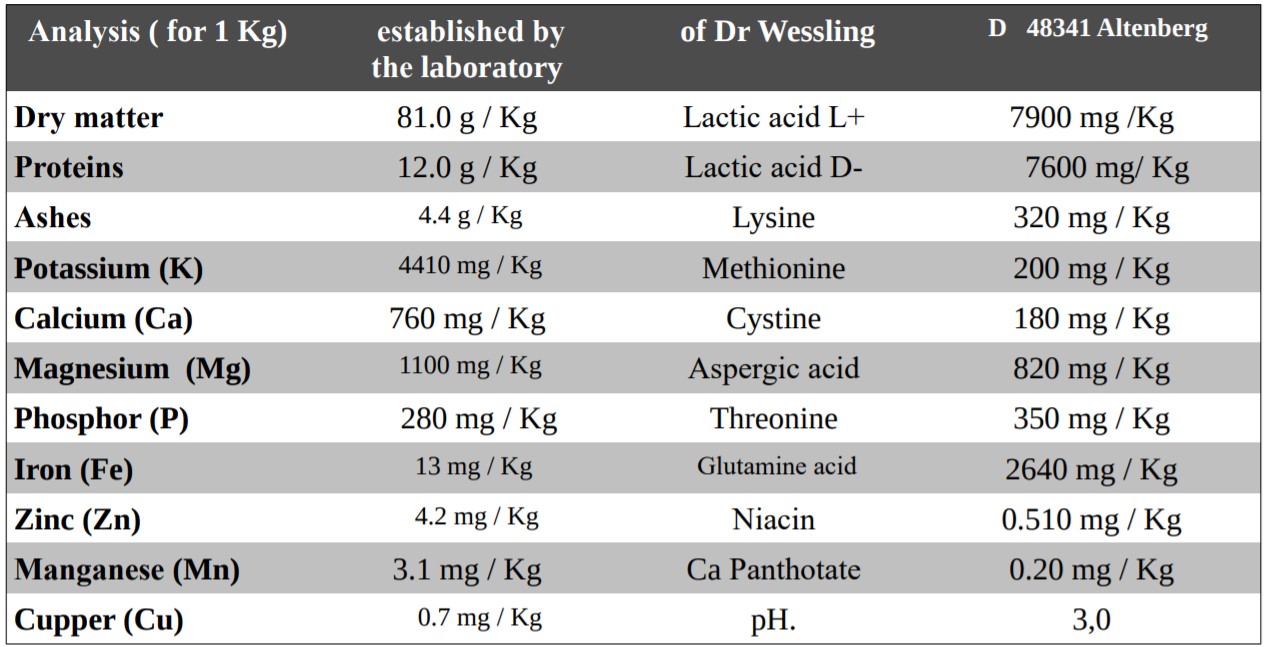
d) Particular interests on the bovines
Breeding and fattening calves:
Help with digestibility, prevention of complications due to withdrawal and maintenance of good digestive flora. So more stable growth and a rapid weight gain.
Meat cattle to fatten:
Maintaining appetite even during finishing periods with very energy-rich rations. It is also used to start fattening (balloting - stress).
Cows:
Appetite-boosting for high-production LVs, therefore driven with high energy rations and requiring good liver protection.
Help set scanning reproductive functions (measurable after 4 to 6 months of use.)
Helps with the preparation of the calving as well as a quick delivery and a good start of the lactation.
Helps with optimal milk quality and maintenance of milk persistence after peak lactation.
And above all, a better immune defense.
e) Tests in nature
RESULTS: High Performance Dairy Cows (VL HP)
Isère:
80 Montbéliardes 900 m altitude.
+ 1 Point of TP in the first month of Kanne Flüssig.
45 Montbéliardes of selection.
+ 1.3 TP point after 1 month of Kanne-Flüssig and then from November to April reports better milk persistence after peak lactation.
Regression of health problems (panaris and various lameness).
Fertility improvement has increased in 6 months from 60 to 80% not significant on these 20 dairy cows.
Haut Doubs:
80 Montbéliardes 1150 m altitude County Zone.
25 kg of Flüssig in a blender per 1000 kg of food on the farm cows consume 4 kg/ cow in the winter, or 100 ml/cow/day.
Did not go below 34 TP.
Fertility problems resolved after Kanne's first winter because, previously, few returns but came in very late heats.
Calf problems resolved following Kanne's first winter on mothers because, the previous year 50% of neonatal mortality (from 0 to 8 days) the following winter, only one calf was lost from a pericarditis. Health problems have been restored to an excellent level of health and economics.
Haute Vienne:
70 Vl Hollstein HP plain operation with grass and corn silage.
In the past, cows were lost regularly without knowing exactly why. Kanne starts in June, in the middle of the grazing season and maize.
100 ml/cow/day, or 7 l. in a watering can on the silage ration once a day. The farmer stopped after 5 weeks because he thinks that 1.20F/cow/day is too expensive, then having lost a cow again to pasture, he understands better the real economic cost and resumes the daily distribution of Kanne Flüssig momentarily stopped. It sums it up as follows: Calves all leave at 8 days without diarrhea and are prized by the merchant who gives the best price!
Mastitis, panaris, lameness, milk fevers and calving accidents are no longer a bad memory. The grass silage made with 1/oo (1 liter of Flüssig per m3 of welL+diluted grass with 3 volumes of water is now of exceptional quality all season.
lle et Vilaine:
30 VL Hollstein, 100 ml/VL/ Kanne Flüssig/day we gained 1.7 points of TP we shot so 2 years, then the breeder converted by his mineral seller went to 100 ml of cider vinegar per cow/day (same dosage and same price as the Kanne-Flüssig!).
Noticing a decrease of 2 points of TP, we went back to the Kanne method and we could see the return of the two points of TP in less than 2 months! The breeding is now in organic production.
Touraine:
80 Vl Hollstein HP (9000 kg of medium milk/VL) sought-after purpose: Fertility, cell regression and butyrics.
After a cell explosion (500,000) the 15 days after the start of the 100 ml of Kanne/VL/Day in December, we found a regression to 245,000 became stable after 2 months and butyrics (average 7300 in December, had disappeared in February) we found a faster heat coming especially on very high performance dairy cows (10,000kg/Lactation).
Loire Atlantique:
108 VL HP Braun-Swiss 100 ml/ Kanne Flüssig/cow/day.
From the first month of use we gained net on 89 milked cows, exactly 2 kg of milk/cow/day as well as -0.9 g of TB and 0.3 g of TP 6 months later, the breeder reported that he had gone down from 1.60 to 1.32 IA/VL glitter!
Lot and Garonne:
100 HP Braun-Swiss VL summer rations, from May 1st include a large distribution of fresh potatoes, then beans and sweet corn, which makes an excess of soluble nitrogen resulting in some problems of digestibility and then fertility associated with this, especially since during sequential periods, cows receive about 60 l. whey from cheese factory per day.
The distribution of Kanne was initially 50 ml/cow/day with a modest result, it was only at the passage to 100 ml/cow/day that we were able to measure the efficiency we were looking for.
It is interesting to note that on this farm, calves consume milk that does not go to cheese (colostrum and other) and this milk is kept in a small tank reserved for this use and since the addition of 20 ml of Kanne Flüssig/Veal/day, this container no longer poses any problem of de-clogging and the calves are magnificent.
Switzerland:
800 m Altitude October 8, 1999.
8,000 kg milk/cow: 4.06% MG 7.17% Protein/lactose
24. March 2000
3.82% MG 7.25% Protein/lactose
Ps. This 27 cow farm also has 200 Saanen white dairy goats and distributes 25 ml/goat/day of Kanne and as it manufactures its own milk production in goat cheese, it has seen in addition to an improvement in the appetite and sanitary status of the herd, a very marked increase in the cheese quality of milk.
Note: For sophisticated techniques called: rehydration after calving, this technique which consists of administering to the freshly calved cow, the day or the day after calving, a solution consisting of 30 to 40 liters of temperate water and containing a solution of electrolytes whose osmotic pressure is equal to that of the blood.
We would like to point out that a veterinarian from the South-East has arrived with very interesting results (not to say identical) without expensive equipment with regard to the purchase of a special pump because the provision of a 30 to l. water solution. 5 liters of Kanne Flüssig in a large container was consumed by the cows tested in less than half an hour given the appetite of this easy-to-apply solution and according to The Work of Prof. Matzkies in Germany, the electrolytes content highly assimilable would explain the excellent results achieved.
f) Results over bovines fattening
Used on bulls: South-east region in hot weather June-August
Animals: Montbéliards, showing signs of liver fatigue (excess corn)
Age: end of fattening from J 230 to J 336
Dosage: 50 ml/young bull/Day on basic ration; Result Returned appetite to form, 14,745 kg higher gain of meat at slaughter compared to the control lot: 1410 g in 336 days; Lot KANNE: 1441 g in 341 days
g) How to use it
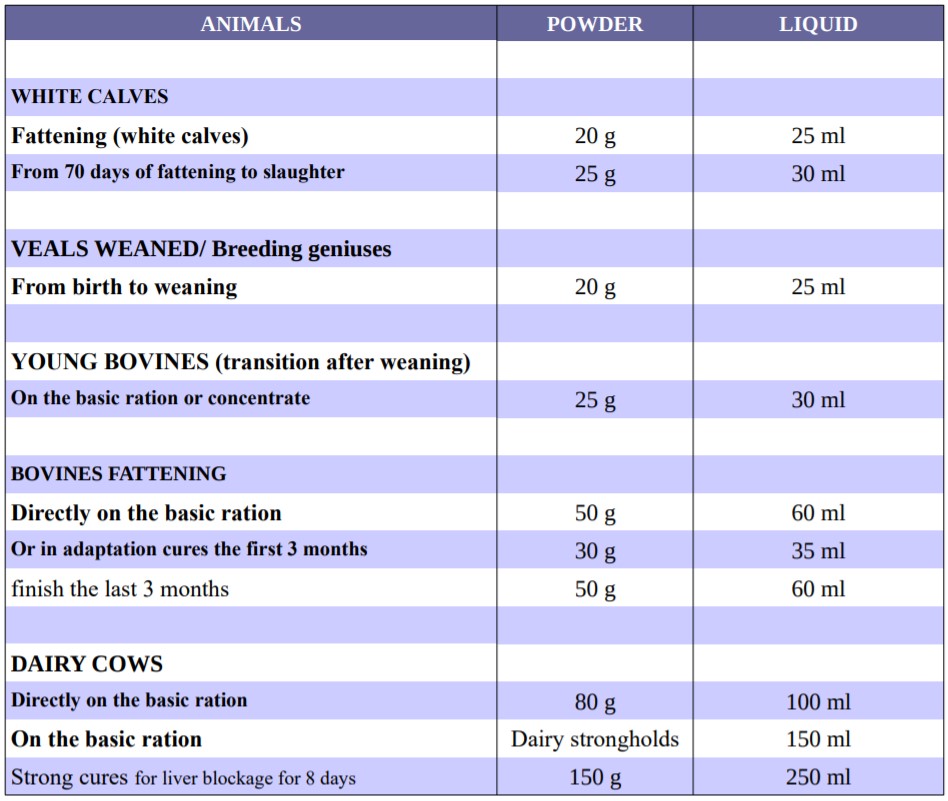
Recommendations:
Powder, store in a dry and airy place
Flussig and Drink-Kan store away from the sun and heats of 35 degrees C.
Incorporation:
1 to 2 times a day on the basic ration.
Antagonists:
Fongicides and antibiotics.
Presentation:
Liquid Flüssig 25 kg canons.
Ferment powder: 20 kg bags.
The Kanne and the Caprins
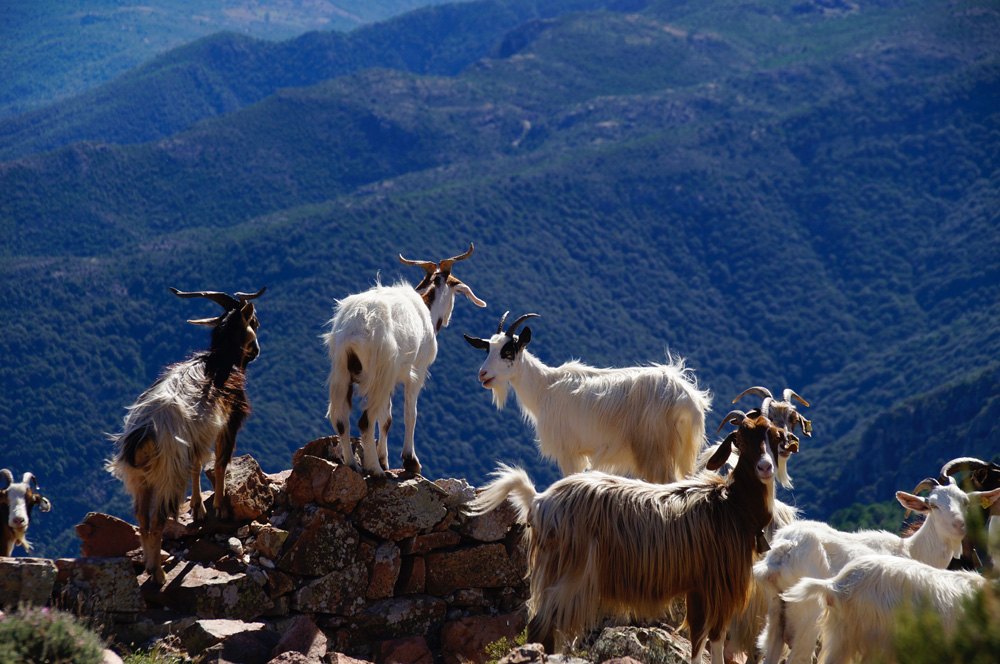
It is a small animal, with arched horns, very agile, especially suitable for jumping. It is found in all regions of the world, especially in the mountains. Males are called goats, small "kids" or "cabris," or in a familiar "biquets" mode.
The goat bleats or “beguète”. A goat is pregnant for 5 months and at birth, in some farms, their horns are burned with hot iron and weed them. The goat has incisors at the bottom but there are not any at the top but a bulge of flesh. Goats all have 60 chromosomes.
The main countries by the size of their goat herd set are the following in 2012 (number of heads):
WORLD (total) : 837 000 000
Chine : 199 000 000
Inde : 125 000 000
Pakistan : 52 800 000
Soudan : 40 000 000
Bangladesh : 34 500 000
Nigeria : 27 000 000
Iran : 26 000 000
Indonésie : 12 450 000
Tanzanie : 11 700 000
Kenya : 11 000 000
In direct supply of food for the Caprins we recommend the Kanne Flüssig.
This cereal ferment, obtained after a slow lactic fermentation (3 to 6 months), while the classic lacto-fermentations e.g. sauerkraut and silage have a duration of 21 to 23 days; has a very interesting feature on ruminants: the two lactic acids D- and L- (dextrogyre and levogyre) are balanced (only known product of this type).
a) Kanne's characteristics
First of all, its pH at 3.0 is very low and gives this product, its very high stability and longevity. Very easy to use, it is used both in 8-day cures, as well as continuously on Caprins that have a large production potential and require all the more natural and non-aggressive assistance to digestibility.
It's not a drug, so we're working on redoing the environment in the long term, which was difficult to apply at first, we had to persuade breeders who didn't believe it, because their advisors were very good at arguing about more with fast actions unfortunately in the short term only. The results of the KANNE are only measured in the medium and long term because, to this day, it is very surprising to specialists as the most technical response for the breeder should be provided by the animals and not by the technicians and advisors of various companies.
b) Analytical Constituents
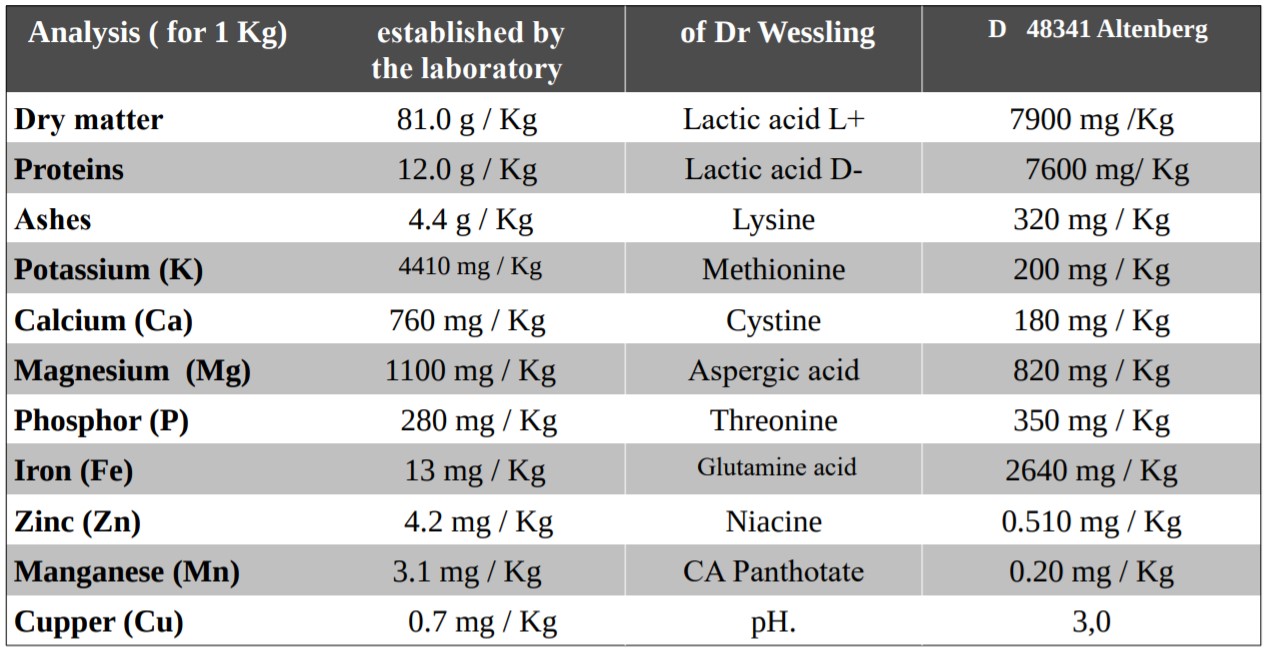
c) Particular interests on the caprins
Farmed goats:
Helps digestibility and maintain good digestive flora.
Helps with the preparation of the calving as well as a quick delivery and a good start of the lactation.
Help in the fight against diseases. Strengthening immune functions.
Helps with optimal milk quality and milk persistence after peak lactation.
d) Example
1 breeding of 400 dairy goats where the problem was a lack of activity of the 100 goats in preparation everything is back to normal and the calvings are going very well. Listeria was caused by poor quality silage (moulds etc...)
e) How to use it
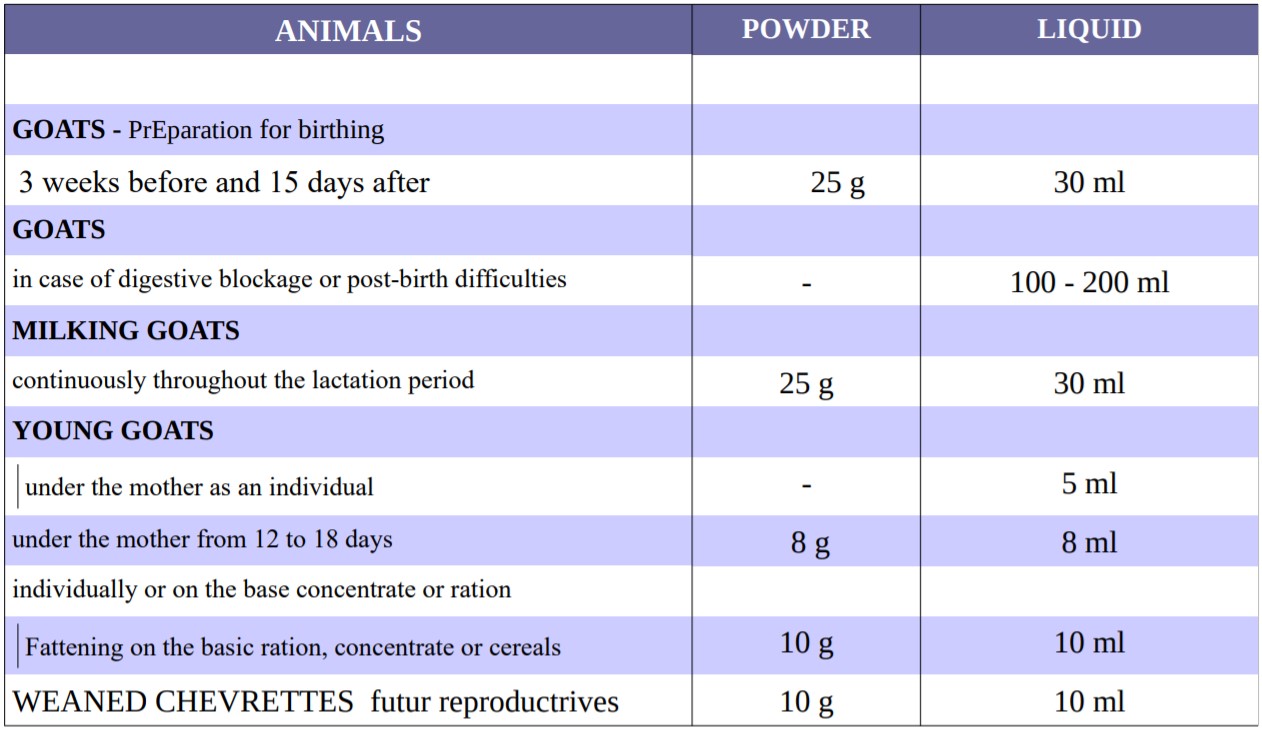
The Kanne and the Ovins
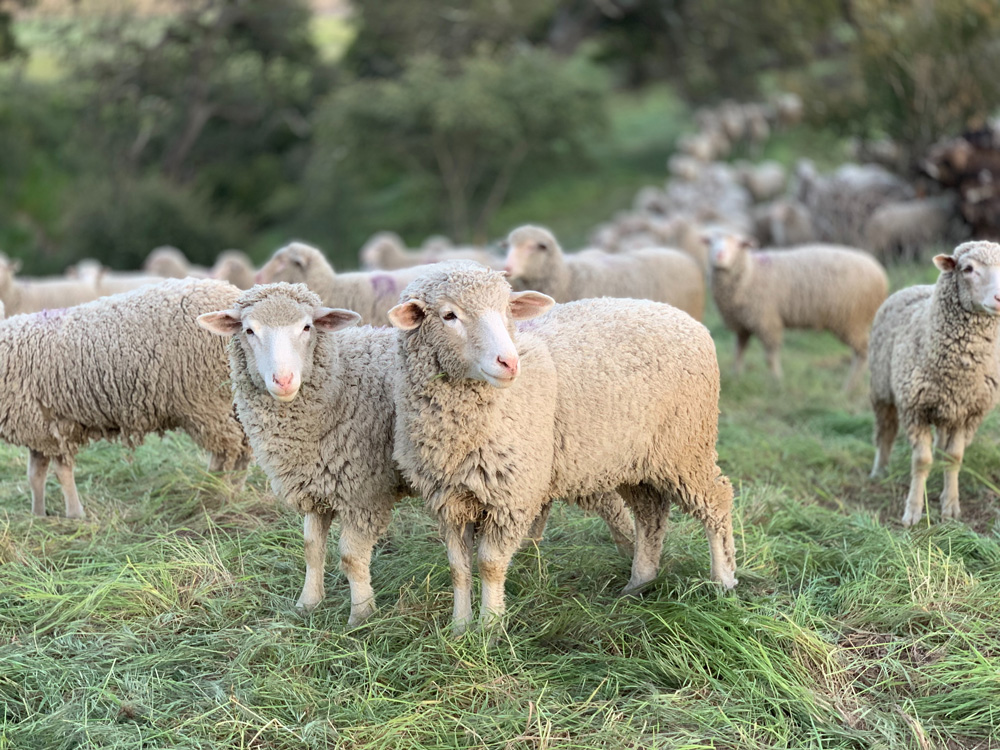
The sheep (Ovis aries)is a herbivorous domestic mammal of the Bovid family, of the caprins subfamily. The man breeds the sheep for his meat, milk, wool and skin with which a leather called "basane" is prepared.
A key animal in the history of agriculture, sheep have profoundly influenced human culture. Sheep are often associated with rural scenes. Sheep appear in many legends, such as the Golden Stun and in the great religions, especially the Abrahamic religions. In ancient and modern rites, sheep are used as animals of sacrifice.
Sheep are exclusively herbivorous mammals. Like all ruminants, sheep have a complex digestive system consisting of four compartments, which allow them to break down cellulose from stems, leaves, seeds and shells ingested into simple carbohydrates. When the sheep graze, the vegetation is chewed to form a mass called a bowl, which, once swallowed, then passes into the first chamber: the rumen. Rumen has a capacity of 19 to 38 l; this is where the bowl ferments through a symbiosis relationship with the bacteria, protozoans and yeasts of the intestinal flora. The bolus is periodically regurgitated in the mouth to be chewed again and impregnated with salives. This regurgitation is an adaptation to graze ruminants more quickly in the morning, then finish chewing and digesting their food later in the day. This is beneficial for sheep that have to graze headlong and are at that time more vulnerable to predators.
During fermentation, rumen produces gases that must be expelled; disturbances, such as sudden changes in diet, can cause life-threatening conditions such as bloating. After fermentation in the rumen, the feed passes into the cap and the leaflet. Special foods such as cereals can bypass rumen outright. After the first three chambers, the food moves into the quail finishing its gastric digestion Calvin that we put at 30 ml of Kanne-Flüssig/animal/day, (goal: oxygenation of blood) 1 month later, we see an attack of Listeria Monocygene of the 300 goats in lactation, while the 100 goats in Kanne are not affected! Decision: apply the 6-day treatment recommended by the treating veterinarian and I immediately increase the entire herd to 30 ml of Kanne Flüssig/goat/day. Result: 18 days later, before passing into the intestine. The quail is the only chamber analogous to the human stomach (the only one that can absorb nutrients to use the energy released).
Apart from forage, the other staple food for sheep is hay and its derivatives: regrowth ect... especially during the winter months. All sheep can survive grazing in the winter, but for cost-effectiveness reasons, it is easier to tuck them in and feed them on dried herbs.
In direct supply of power for the Ovins we recommend the Kanne Flüssig.
This cereal ferment, obtained after a slow lactic fermentation (3 to 6 months), while the classic lacto-fermentations e.g. sauerkraut and silage have a duration of 21 to 23 days; has a very interesting feature on ruminants: the two lactic acids D- and L- (dextrogyre and levogyre) are balanced (only known product of this type).
a) Kanne's characteristics
First of all, its pH at 3.0 is very low and gives this product, its very high stability and longevity. Very easy to use, it is used both in 8-day cures, as well as continuously on sheep that have a large production potential and require all the more natural and non-aggressive assistance to digestibility.
It's not a drug, so we're working on redoing the environment in the long term, which was difficult to apply at first, we had to persuade breeders who didn't believe it, because their advisors were very good at arguing about more with fast actions unfortunately in the short term only. The results of the KANNE are only measured in the medium and long term because, to this day, it is very surprising to specialists as the most technical response for the breeder should be provided by the animals and not by the technicians and advisors of various companies.
b) Analytical Constituents
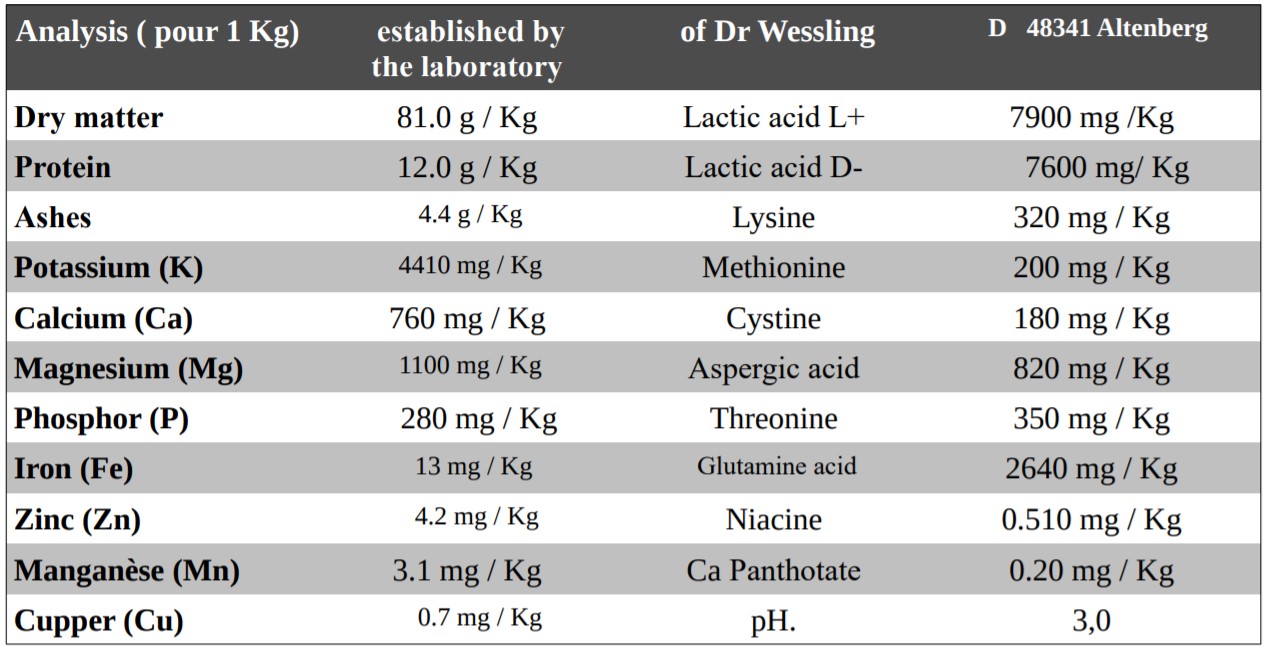
c) Particular interests on the Ovins
Farmed sheep and sheep:
Help with digestibility, prevention of complications due to withdrawal and maintenance of good digestive flora.
Helps with the preparation for calving as well as a quick delivery and a good start of lactation.
Help in the fight against diseases. Strengthening immune functions.
d) How to use it
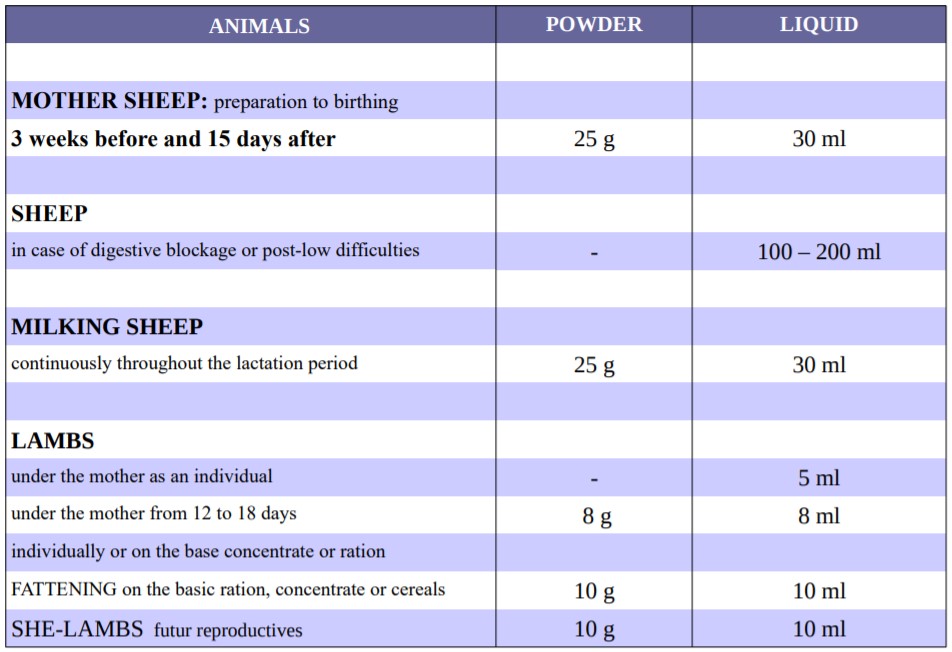
Recommendations:
Powder, store in a dry and airy place.
Liquid, store in a cool place (max.35oC) protected from strong lights and frost
Incorporation:
Either in cereals or concentrate or directly on the base ration by watering can and also in full ration. It can be diluted, if necessary, with several volumes of water at the time of distribution. When mixing the liquid Flüssig with the crushed cereals, it will be consumed within 8 days of making it.
Presentation:
Liquid Flüssig 25 kg canons.
Ferment powder: 20 kg bags
The Kanne and the Porks
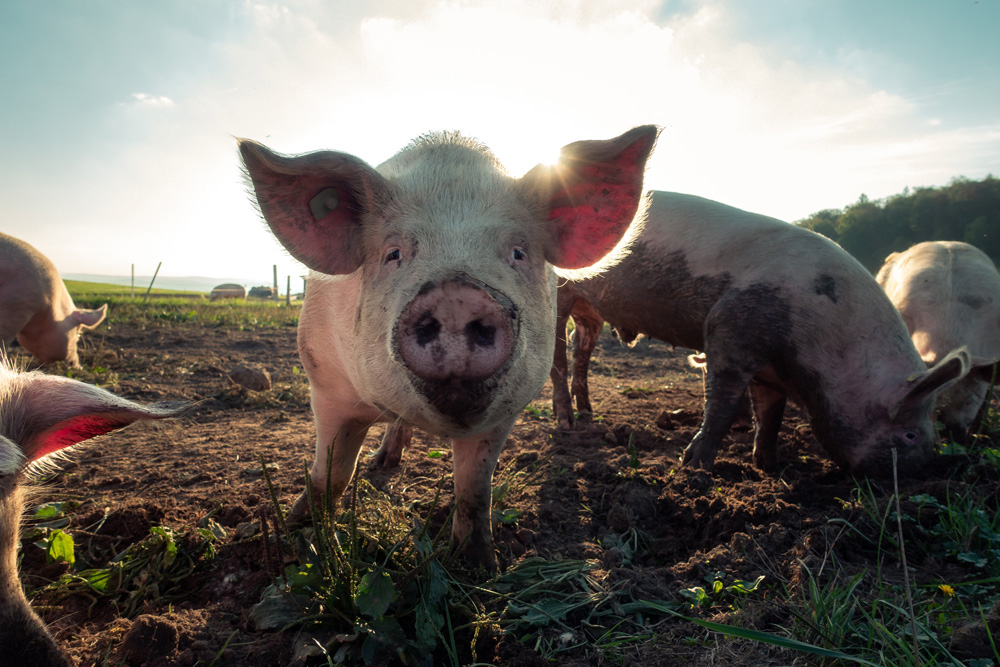
The pig (from Latin porcus) which also calls itself pig domest The pig (from the Latin porcus) which also calls itself domestic pig (Sus scrofa domesticus) or city pig is a domestic mammal omnivore of the pig family.
The adult female is the sow, the young female raised for reproduction is a cock, the male is the boar and the young pig (before weaning) is called piglet, goret (or suckling pig in the plate), the young weaned pig is called nurrain (or nannie).
The term also refers to the meat supplied by this animal which is the most consumed meat in the world and in Europe. Production is concentrated in three areas: Europe, Asia and North America. China with 46 million tons (2003) produces almost half of the world total.
Global hog production in 2003 was about 955.5 million animals, produced in Asia 577.2 million, Europe 198.8 million, North America 93.5 million, South America 59.5 million and Africa-Oceania (Australia mainly) 27.5 million.
Global production is steadily increasing and is estimated to increase by 15% at the end of 2012.
Food:
The breeder controls and balances the pig's diet. First, he gives him important rations of cereals (wheat, barley, corn rye...). Then it also provides it with the proteins, minerals and vitamins needed for its growth.
Depending on its age, a pig eats 1 to 2 kg of food per day. At 6 months, when he weighs 100 kg, he has already ingested 250 kg of food, i.e. I.C. of 2.5 (I.C. Consumption Index is the number of kg of food to produce 1 kg of live weight).
In direct supply of food for the Pigs we recommend the Kanne Flüssig.
This cereal ferment, obtained after a slow lactic fermentation (3 to 6 months), while the classic lacto-fermentations e.g. sauerkraut and silage have a duration of 21 to 23 days; has a very interesting feature on ruminants: the two lactic acids D- and L- (dextrogyre and levogyre) are balanced (only known product of this type).
a) Kanne's characteristics
First of all, its pH at 3.0 is very low and gives this product, its very high stability and longevity. Very easy to use, it is used both in 8-day cures, as well as continuously on pigs that have a large production potential and require all the more natural and non-aggressive assistance to digestibility.
It's not a drug, so we're working on redoing the environment in the long term, which was difficult to apply at first, we had to persuade breeders who didn't believe it, because their advisors were very good at arguing about more with fast actions unfortunately in the short term only. The results of the KANNE are only measured in the medium and long term because, to this day, it is very surprising to specialists as the most technical response for the breeder should be provided by the animals and not by the technicians and advisors of various companies.
b) Analytical Constituents

c) Particular interests on the Porks
Farmed pigs:
Help with digestibility, prevention of complications due to withdrawal and maintenance of good digestive flora.
Help in the fight against diseases. Strengthening immune functions.
For preparation cures put down (8 days before) that continuously.
Helps oxygenate sow's' blood during high heat.
e) How to use it
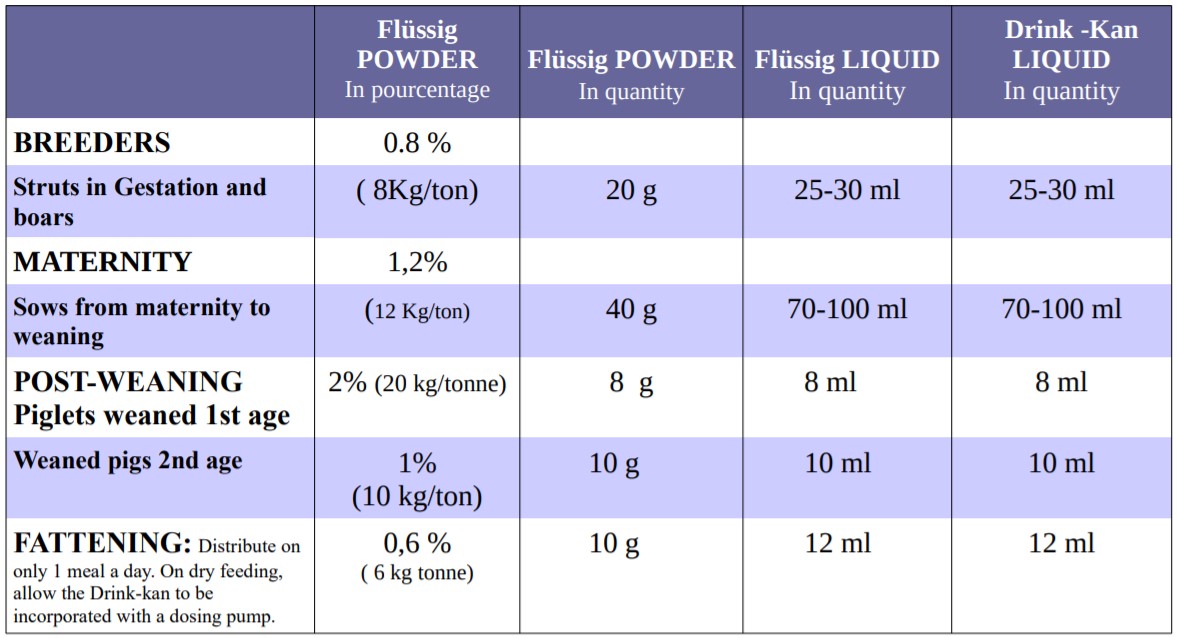
Preparation birthing:
100 ml/ Flüssig/Sow/day, 6 days before calving
The day after weaning:
250 ml/ Flüssig/Sow in single meals to avoid post-lactation constipation
Piglets under the mother:
5 ml/ Flüssig: reseeding of digestive flora (5 ml /Piglet)
The Kanne-Flüssig is to be incorporated directly into the food to the standards shown below and this dosage is of course recommended directly in the soup maker.
Recommended dosages
On Pork Charcutier food:
2 kg per ton of food or 4 g./pork per day
2 kg of food ingested on average/pork/day
On food female Pigs and breeders:
1.5 kg per ton of food
Preservation time:
2 years from the date of manufacture (see label) and keep at shelter from the air, light, heat and frost.
25 Kg "Brew well before use"
The Kanne and the Poultries
Chickens, Chickens, Roosters, Ducks, Turkeys, Rabbits, Geese, Guinea fowl, Quail, Pigeons etc...
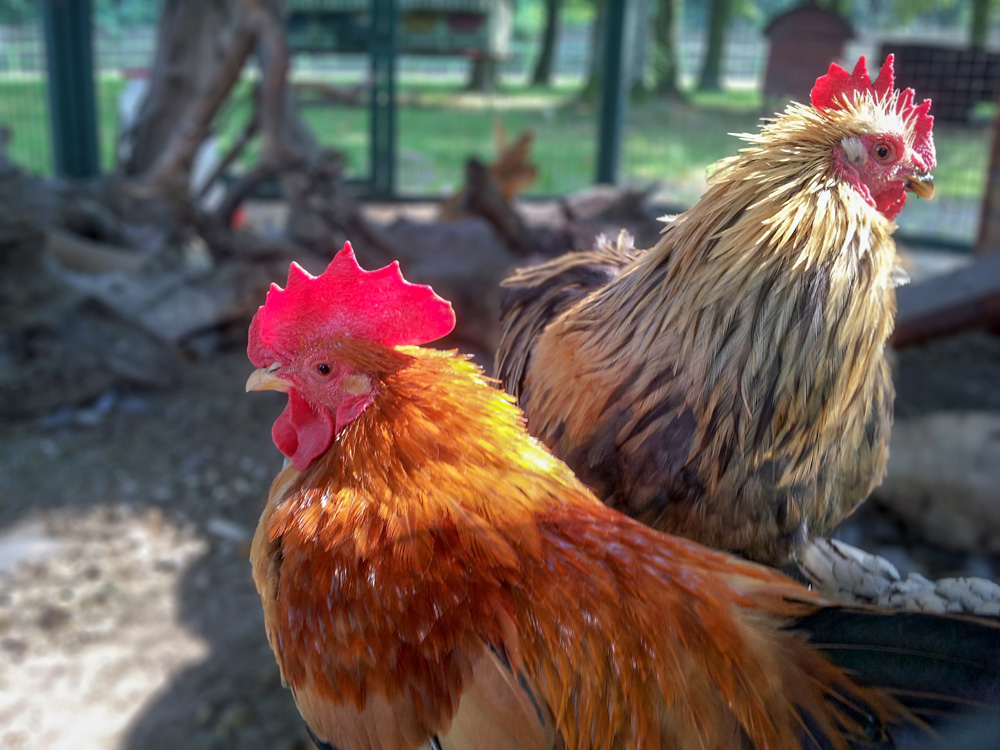
A poultry is a domestic bird, usually owned by gallinaceans or palmipedes, raised for its flesh or eggs, either in a traditional backyard or in industrial farming.
Poultry is a collective term that encompasses all farmyard birds, which are the subject of poultry farming.
With the development of above-ground farming, protein-rich animal meal has long been used by feed manufacturers as a total or partial substitute for plant-based proteins (soy cakes, rapeseed. Since the 1990s and the health problems caused by spongiform encephalitis (or "mad cow disease"), the sector has been highly regulated, and the reputation of these flours is poor.
Possible reintroduction of certain types of flours into the diet of cattle?
At the beginning of 2008, Brussels would study, under pressure from farmers and sectors, following the increase in feed prices (150% increase for wheat, and 100% for soy) to reintroduce not flours produced from by-products from ruminants, but those produced with leftover pigs, poultry and fish, under certain conditions: "These would be proteins extracted exclusively from unusable pieces but suitable for human consumption," according to Nicolas Douzin, director of the National Federation (France) of the industry and wholesale meat trade.
Organic Agriculture representatives would prefer incentives for a return to grass. Of course, this will never happen again because of mad cow problems.
In direct supply of food for the Poultries we recommend the Drink-Kan.
The Turkeys
Supplementary food DRINK-KAN Organic cereal ferment
a) Particular interests on the Turkeys
Help with digestibility, prevent complications
Appetite-boosting.
Help in the fight against diseases. Strengthening immune functions.
Prevention of respiratory complications by reducing gas fumes from slat pits.
Ingredients: Water, Wheat, Rye, Oat, Salt
"Bakery Coproducts" Fermented sourdough whole meal bread, (Slow lactic fermentation)
b) Analytical Constituents

c) How to use it

To be sure to avoid any plugging problems, it is necessary to compress the dosage week in 4 days, Monday-Tuesday: Kanne, Wednesday pure water, Thursday-Friday: Kanne and Saturday-Sunday: pure water, for example:
Week 1: the 14 liters will be divided into 4, i.e., 3.5l./day on Monday, Tuesday and Thursday, Friday.
Recommandations:
Keep the water tank and pipes clean.
Store the cans in a cool place. Protect from light, heat and frost.
Presentation:
Barrels of 25 kg
Incorporation:
In drinking water
The Chickens
Complementary food DRINK-KAN Organic cereal ferment
a) Particular interests on the Chicken
Help with digestibility, prevent complications.
Appetite-boosting.
Help in the fight against diseases. Strengthening immune functions.
Ingredients: Water, Wheat, Rye, Oat, Salt
"Bakery Coproducts" Fermented sourdough whole meal bread, (Slow lactic fermentation)
Patented process KANNE – BROTTRUNK®
b) Analytical Constituents
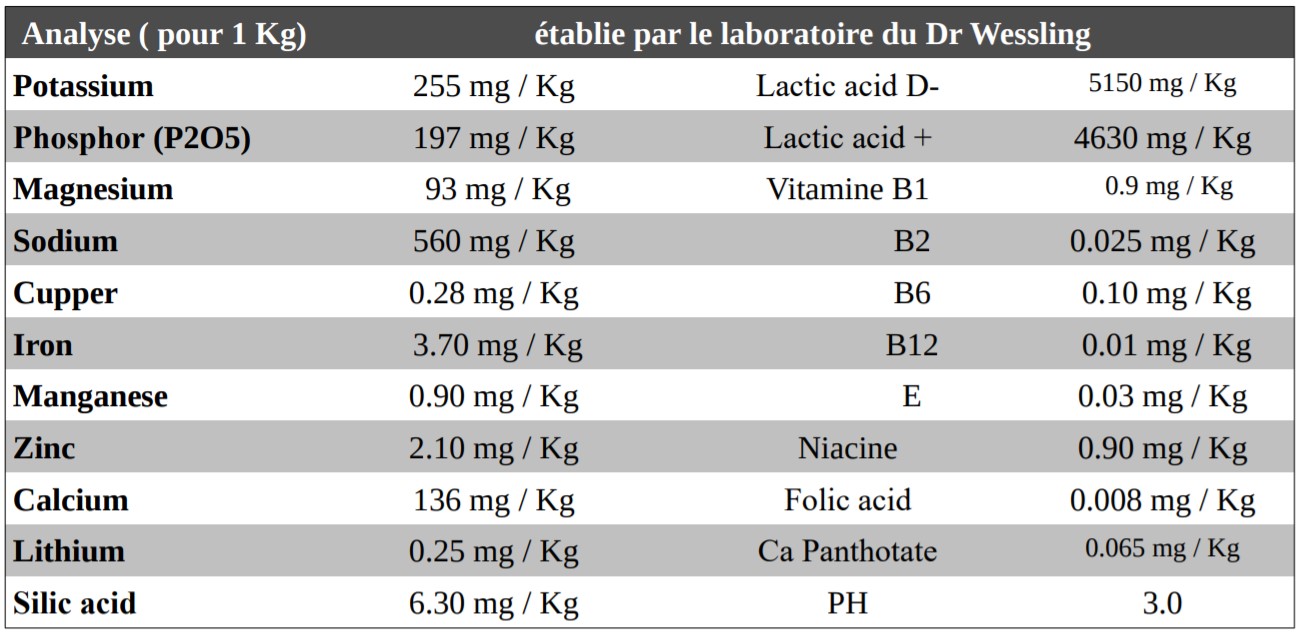
c) How to use it
PROGRAM SIMPLIFIED FOR PUBLISHING ABOUT ANIMAL GROWING
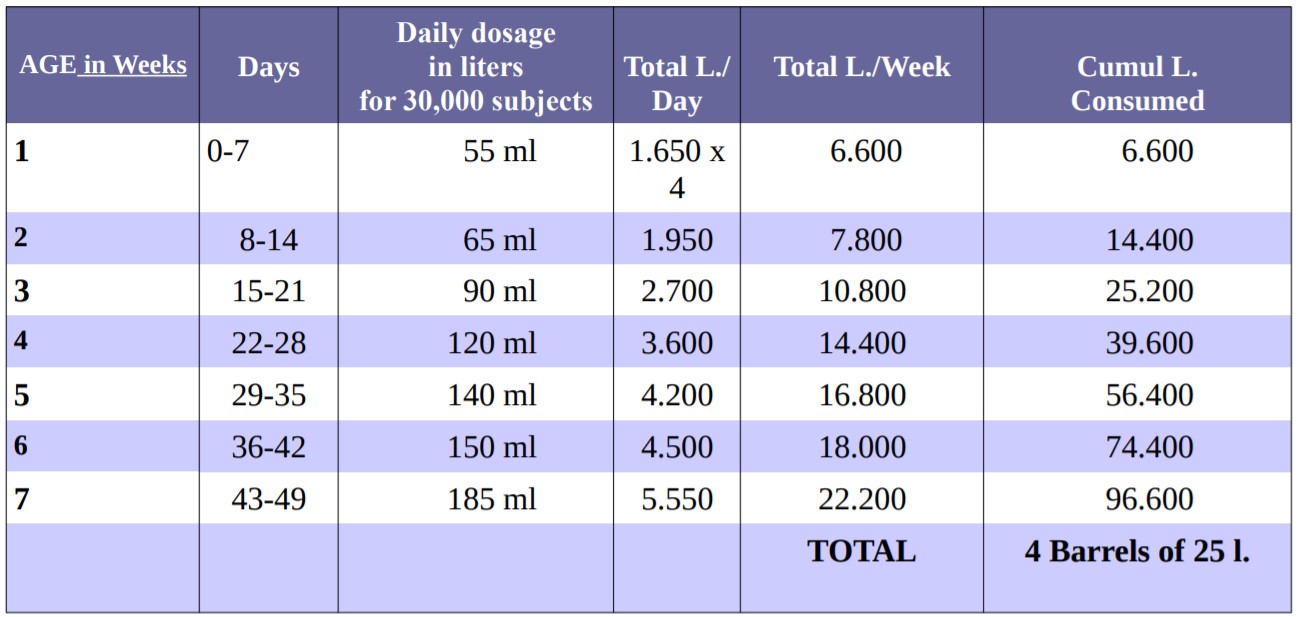
Remarks:
If you do not have a dose pump to incorporate the DRINK-KAN ferment in a maximum of 4 to 6 hours per day, and it is incorporated into a storage tray, it is advisable to ensure the cleanliness of the ferment.
In farms where we are faced with plugging problems, we recommend spreading the dosage/week over 4 days instead of 7 in the following way: Monday-Tuesday and Thursday-Friday - 4 days DRINK-KAN Wednesday, Saturday and Sunday: pure water.
Compared to these daily doses, one can incorporate 1.2 ml per liter of drinking water, or 1.2 /oo.
Recommendations:
Keep the water tank and pipes clean.
Store the cans in a cool place. Protect from light, heat and frost.
Presentation:
25 kg cans
Incorporation:
In drinking water
The Ducks
Complementary food DRINK-KAN Organic cereal ferment
a) Particular interests on the Ducks
Help with digestibility, prevent complications
Appetite-boosting.
Help in the fight against diseases. Strengthening immune functions.
Prevention of respiratory complications by reducing gas fumes from slat pits
Ingredients: Water, Wheat, Rye, Oat, Salt
"Bakery Coproducts" Fermented sourdough whole-meal bread, (Slow lactic fermentation)
b) Analytical Constituents
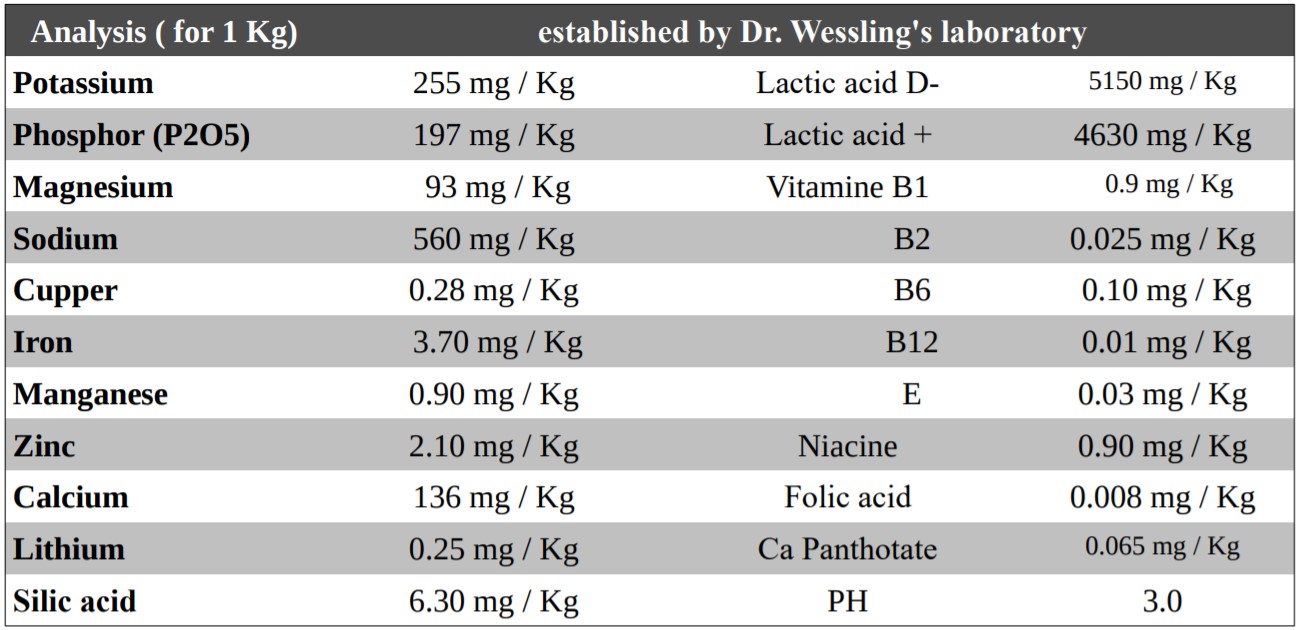
c) Example on duck farming
7500 ducks with Kanne and 7500 control ducks.
Entered on July 3, 1977 (in hot weather).
Kanne Building Result: Losses 161 M Males - 89 F Females or 250 mortality.
Out of 3582 M - 3784 F - 7365 entered, or 3.39% of losses.
Exceptional meat.
Duration 12 weeks, I.C (Consumption index): 2,890 (- 250 g as the control lot).
Witness Building: Losses 211 M - 84 F or 295 deaths.
The lot coughed in 6th week and was treated to The Oxamid.
Out of 3130 M - 4407 F - 7537 entered, or 3.91% of losses.
Standard meat quality
Duration 13 weeks , CI (Consumption Index): 2,810 (-250 g as Kanne lot)
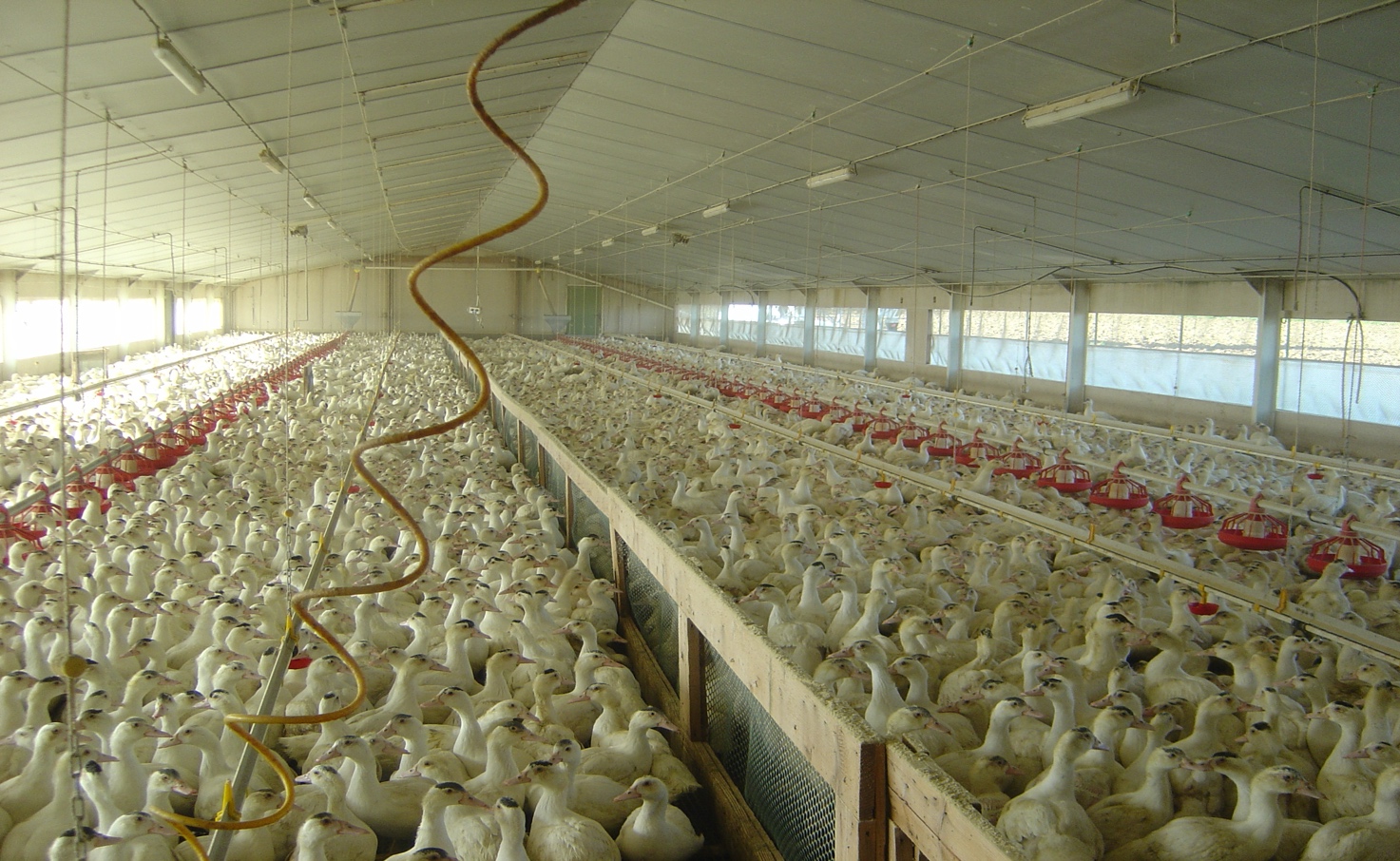
Slurry
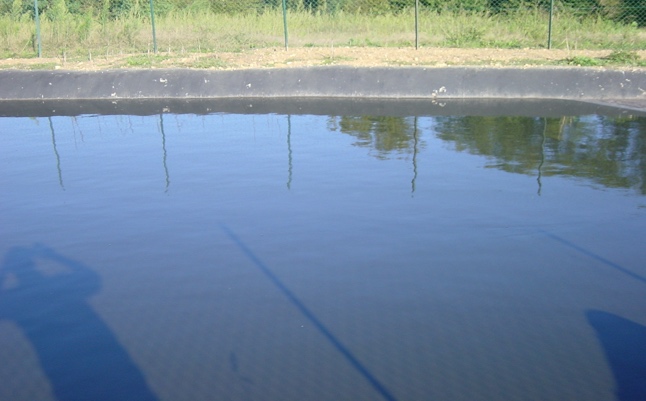 | 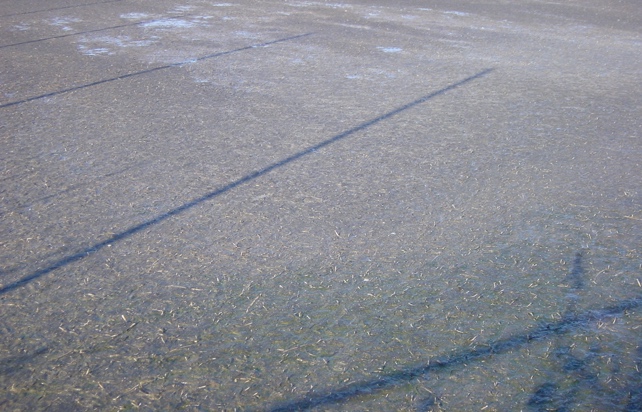 |
d) How to use it
PROGRAM SIMPLIFIED FOR PUBLISHING ABOUT ANIMAL GROWING

To be sure to avoid any plugging problems, it is necessary to compress the dosage week in 4 days, Monday-Tuesday: Kanne, Wednesday pure water, Thursday-Friday: Kanne and Saturday-Sunday: pure water, for example:
Week 1: the 14 liters will be divided into 4, i.e., 3.5l./day on Monday, Tuesday and Thursday, Friday.
Recommendations:
Keep the water tank and pipes clean
Store the cans in a cool place. Protect from light, heat and frost.
Presentation:
25 kg cans
Incorporation:
In drinking water
Soil Rehabilitation
Cereal crops, Market gardening, Plantations
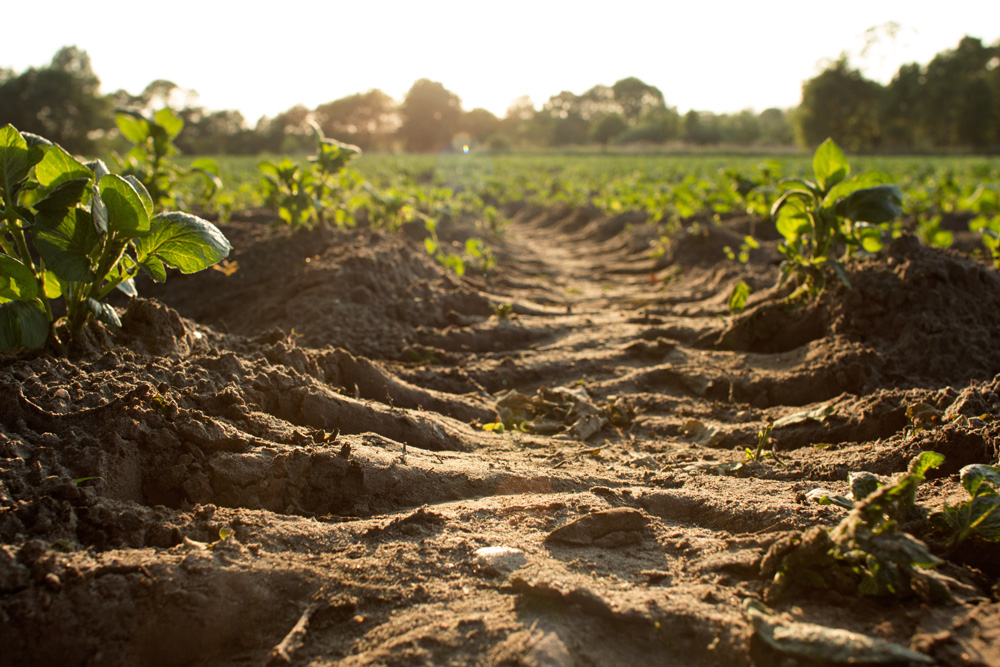
The regression of a soil is mainly due to erosion. It and corresponds to a phenomenon of rejuvenation of a soil (return to the opposite state to the climatic stage).
Soil degradation is often the result of a combination of factors, possibly including regression, that lead the soil to a different evolution of natural evolution related to climate and local vegetation. It is usually directly related to the action of man and it can be for example provoked by;
Replacing the diverse primitive vegetation (called climacque) with secondary vegetation (monoculture in the worst case), which alters humus and soil formation.
A decrease in organic material levels induced by overexploitation of the soil (not return, or insufficient return of the exported material), its leaching.
Destruction of humus and insoluble argilo-humic complexes by ploughing and destroying the living upper layers of the soil, or by excessive (too intensive or frequent) tillage of the soil.
Acidification, salinization and possibly desertification, which can be induced or exacerbated by climate change, but also by irrigation and drainage;
Erosion (water and/or wind) it is facilitated by ploughing and/or weeding that leave soils bare for too long (they are then deconstructed and degraded by the action of drought swings and/or the impact of rains that leach them instead of penetrating them.
Pollution by heavy metals or biocides (pesticides or other pollutants) that would kill organisms essential to maintain demand and capillarity of the soil (mushrooms, earthworms, etc.).
Agriculture increases the risk of erosion by disrupting local vegetation. Practices that accelerate soil erosion include:
Overgrazing
Monoculture
Spaced-row cultivation (industrial corn, vines) without vegetation cover
Bare soil in autumn and/or winter
Deforestation and clearing of large plots to increase agricultural land
Furrows in the direction of the slope
Excessive use of fertilizers and pesticides, etc.
For soil rehabilitation we recommend Kanne Flüssig.
The treatment of soils by the Kanne-Flüssig, whether for cereals, market gardening or plantation stoms is quite appropriate in most cases for its rehabilitation.
This soil rehabilitation may be necessary either on depleted land after intensive cultivation, or after the use of chemical fertilizers or pesticides and even after oil pollution.
The Kanne-Flüssig, which has received all the organic certifications, will also be a very important input for organic crops.
Soil erosion, which can be observed throughout Europe, is due to the fact that the amount of bacteria producing lactic acid has been reduced by the use of current means of treatment. Soil that contains a large amount of lactic acid-producing bacteria absorbs rainwater much better, arable soil is denser and landslides are avoided.
We had already made these observations at home in our experimental garden during the first two years of use of the Kanne ferment, the earth was washed away only when it was subjected to heavy rainfall.
Currently, after 5 years of use, it can rain in torrents, the earth absorbs rain like a sponge, this phenomenon is due to the fact that bacteria have imposed themselves in the soil and that the composition of the earth has changed.
Acid rain and various environmental pollution overs over the past thirty years, combined with chemical treatments, have led to an increasing disappearance of natural microorganisms from the earth, soil erosion is practically attributable to these nuisances.
If we bring to the soil and plants the bacteria that produce the lactic acid they need, we get a new revival and a new ability to grow. As a result, plants re-contain the mineral salts necessary for life through the lactic acid cycle.
In conclusion, the tests carried out on carrots, all kinds of vegetables, many varieties of flowers, shrubs, fruit trees and vines, gave us the same observations as in cereal crops, sugar beets and potatoes: all results are the same: decrease in cryptogamic diseases and stabilization of the plant, and most importantly: vegetables and fruits have more flavour and keep longer!
a) Analytical Constituents
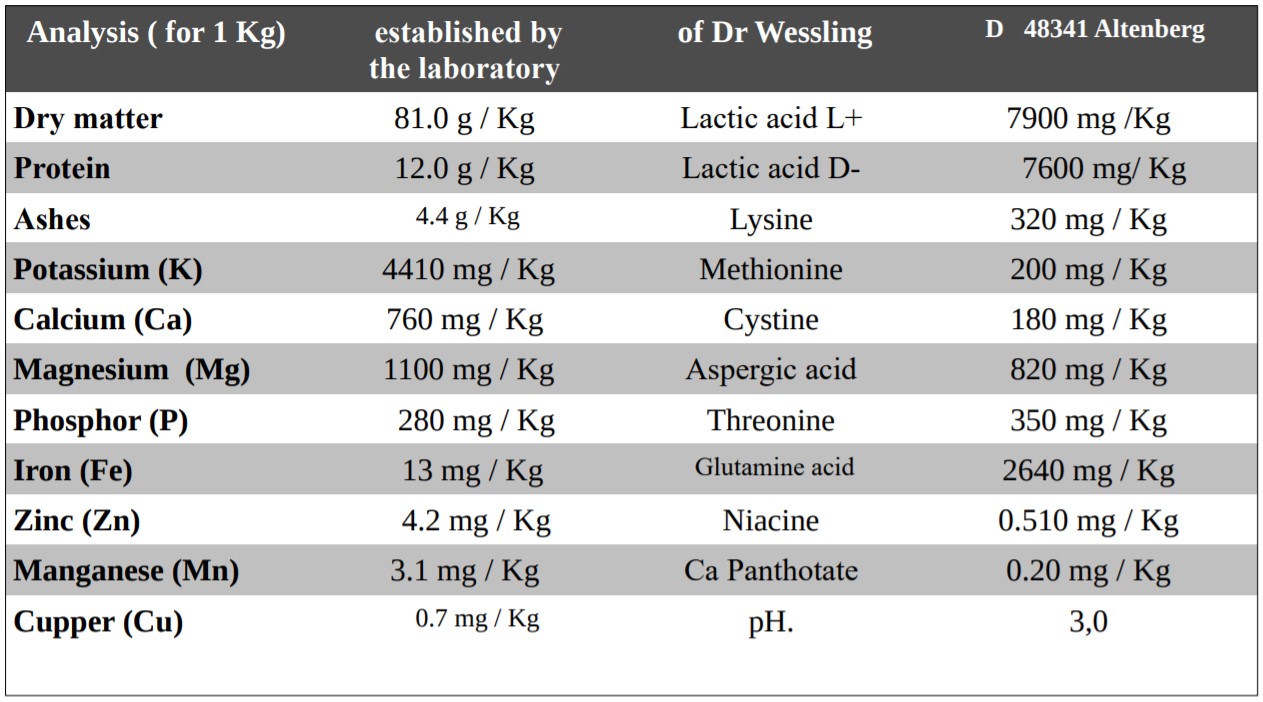
b) How to use it
On average: 25 to 100 l. of Flüssig to be diluted in 400 l. of water and well dilute the deposit.
Classic dose: 25 to 100 l/ha (tired or polluted soils: up to 600 l/ha.
Recommended dosages: Check the distributor's technical sheets according to the crops.
Recommendations: Powder, store in a dry and airy place.
Incorporation: 1 to 2 times a day on the basic ration.
Antagonists: Fungicides and antibiotics.
Presentation: Flüssig liquid Cans of 25 kg. Ferment powder: 20 kg bags.
Treatment of sledge, compost
Animals, Vegetals
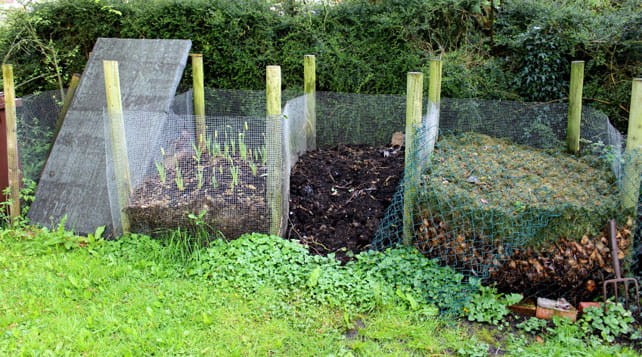
Sledge is a mixture of farmed animal droppings and water in which the liquid element dominates. It may also contain small amounts of litter. It is produced mainly by farms that use little or no litter for waste disposal (otherwise, they produce manure). Sledge can be used as an organic fertilizer.
Contrary to what one might think, the sledge is not in itself polluting because the nitrates it contains can be quickly absorbed by the vegetation. Spreading sledge is part of the nitrogen cycle, as nitrogen is an essential element for plant growth.
Pollution comes from excessive sledge spraying or heavy rain that occurs immediately after spraying, before plants have been able to absorb nitrates. This influx of water makes nitrates into groundwater and/or streams and causes eutrophication, i.e. excess nutrients in the water and plant proliferation known as "green tides".
Composting is a practice that accelerates the natural process of decomposition of organic matter into mineral salts and humus. It requires good ventilation because it uses aerobic bacteria. A good compost always has a phase during which it can heat up to 70oC!
After the heating phase, there is a phase during which other processes act, during which fungi and animals such as Springtails, lombrics, nematodes contribute to further decomposition of solid particles. We also have an intervention of protists, especially lying.
Compost degrades complex organic matter. The degraded, simplified elements can then re-enter the cycle of matter and in particular be reused by plants. Composting is an aerobic process (in the presence of air).
For slur, composting we recommend Kanne Flüssig.
The balance of the two families of lactic acid D- and L-L the Kanne Flüssig is used with a very clear success in composting, with the advantages of raising the composting materials very quickly, allowing a very rapid neutralization of bad seeds, cryptogamic diseases and other undesirables to be eliminated by rapid thermal rise.
The Flüssig KANNE has all the qualities required to start and accelerate the fermentation of organic waste: manure, wood grinding, foliage, weeds, grass, etc.
a) Example for the composting
1 liter of Kanne Flüssig per m3 of well-ground composting material. This addition leads to extremely rapid transformation processes.
To be sure to distribute the ferment of thick raw organic cereals, it will be diluted in the necessary volume of water in order to better distribute it.
In the autumn of 1988, the garden of Lonen Brambauer developed with a ste mixer. A first test was incorporated with a Kanne-Flüssig ferment (1 liter/m3) and the second heap remained as is.
The following temperatures were then observed:
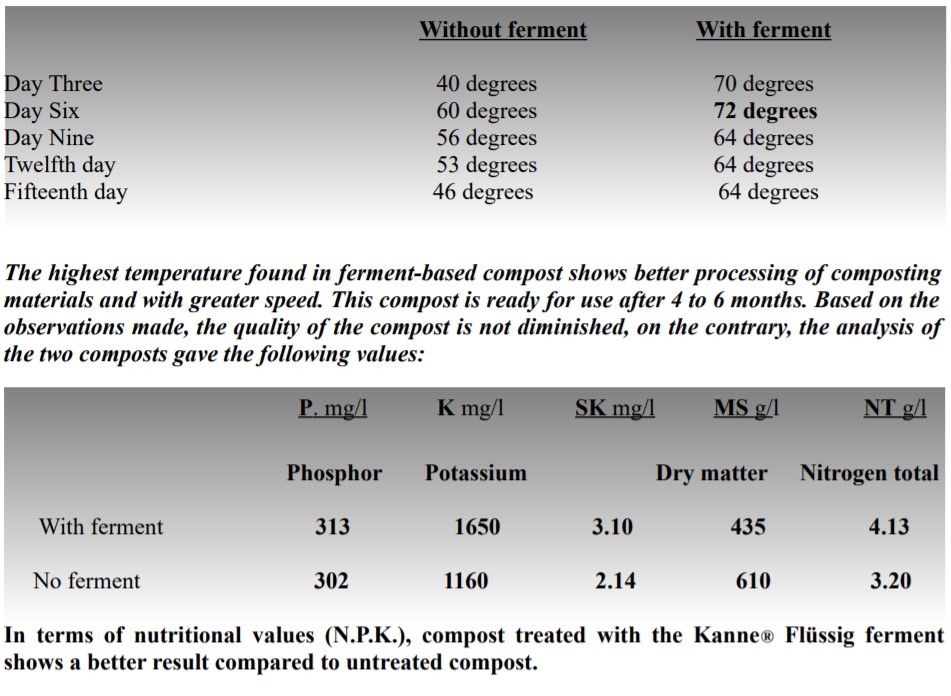
b) How to use it
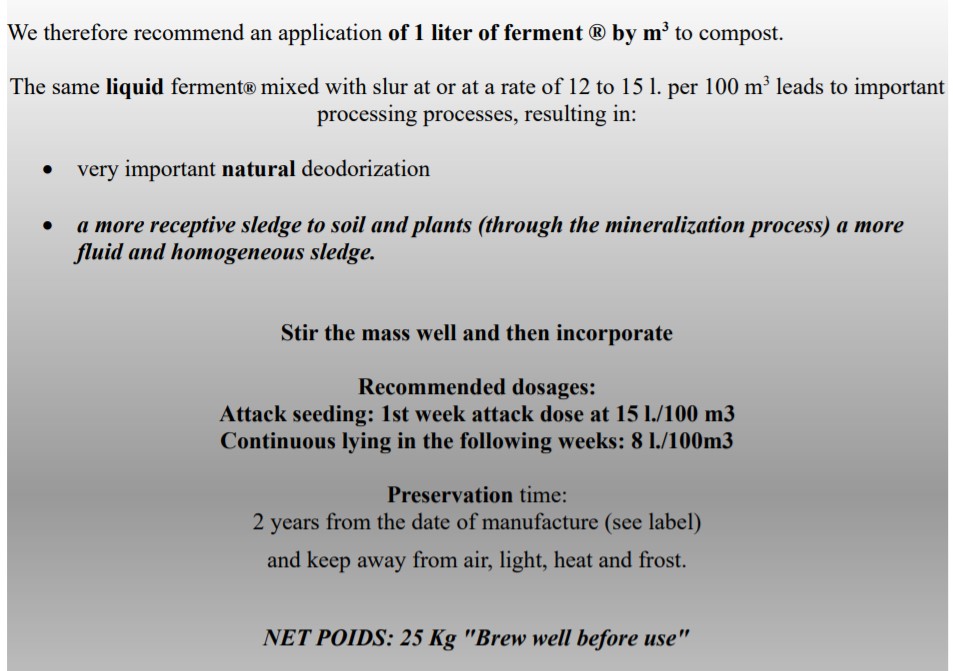
The Market Garden
Vegetables, Fruits, Flowers
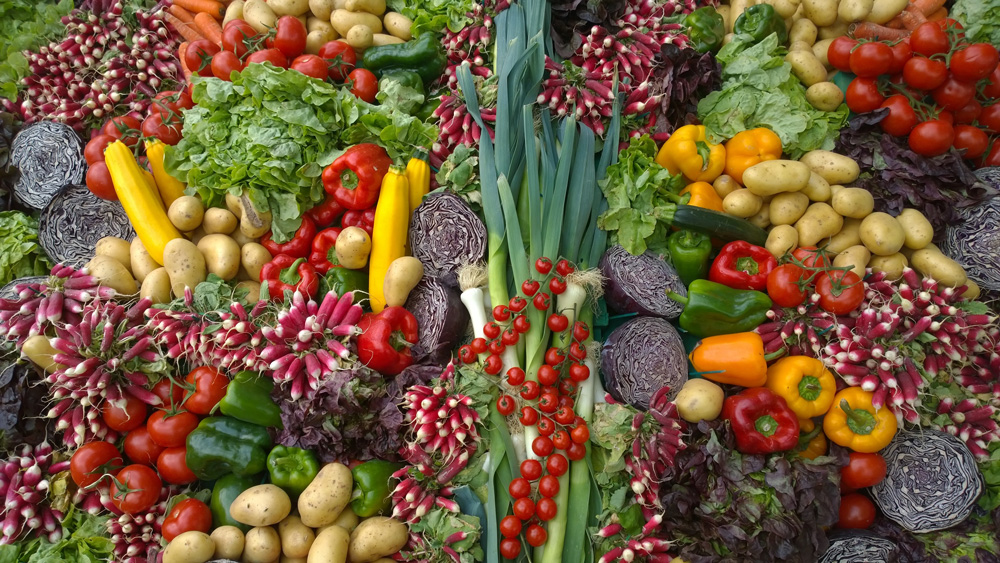
Market gardening is the cultivation of vegetables and certain fruits, or even some ornamental flowers, for intensive and professional food use.
The term, which appeared in the 19th century, derives from marshes.
Market gardening is a type of intensive agriculture, which aims to maximize land use and produce in very short time cycles. On the other hand, it requires sometimes significant means (irrigation network, greenhouses, etc.) and an abundant labor force, as mechanization is rather difficult to implement in this type of crop.
The market gardener grows vegetables to sell. Tasks vary depending on the choice of vegetables grown, the region, the material used and the seasons. It prepares soils, sows seeds, waters or irrigates, fertilizes with fertilizer, protects plants from pests.
He observes the growth of plants every day and ensures their good condition.
Finally, he harvests the vegetables, prepares them and packs them for sale.
For the Garden Market we recommend the Kanne Flüssig.
For watering Vegetables, Fruits, Flowers we recommend the Bottrunk Plants.
a) Informations on the use of the Kanne Flüssig ferment
W. Lichtenberg head gardener at the Kanne test garden: It is necessary to differentiate between extensive market gardening, either in the field and intensive in greenhouses, dosages are to increase by about 1/4 for the full field.
It should also be noted that Kanne treatments are 100% natural long-term treatments, which means that in the first year, dosages should always be higher, as they are dosages of attack and regeneration of pathological soils (pH - 8.0 or 8.5.) In the garden of Lenen, the Kanne Flüssig has been in use for more than 10 years now and the average dosage is currently 10 ml/m2 whereas we started at 70 ml/m2! The pH is also restored between 6.5 and 7.2 and the soil structure has become permeable since the regular use of Kanne.
It is strongly advised not to force the use of fertilizer with the use of Kanne it is better to stay in standards below the usual dosage without Kanne. Never 10% Kanne and 90% fertilizer, he recommends preferably 10%-10% of each.
For market gardening we recommend Brottrunk-Plants / Add for leaf or Drop sprays. In Gardening, pH of the ideal water is between 5.8 and 6.0 is very important and by the addition of Brottrunk plants to water ingesting or nebulizations, one gets there without inconvenience and successfully on the taste quality and preservation of vegetables.
b) Analytical Constituents
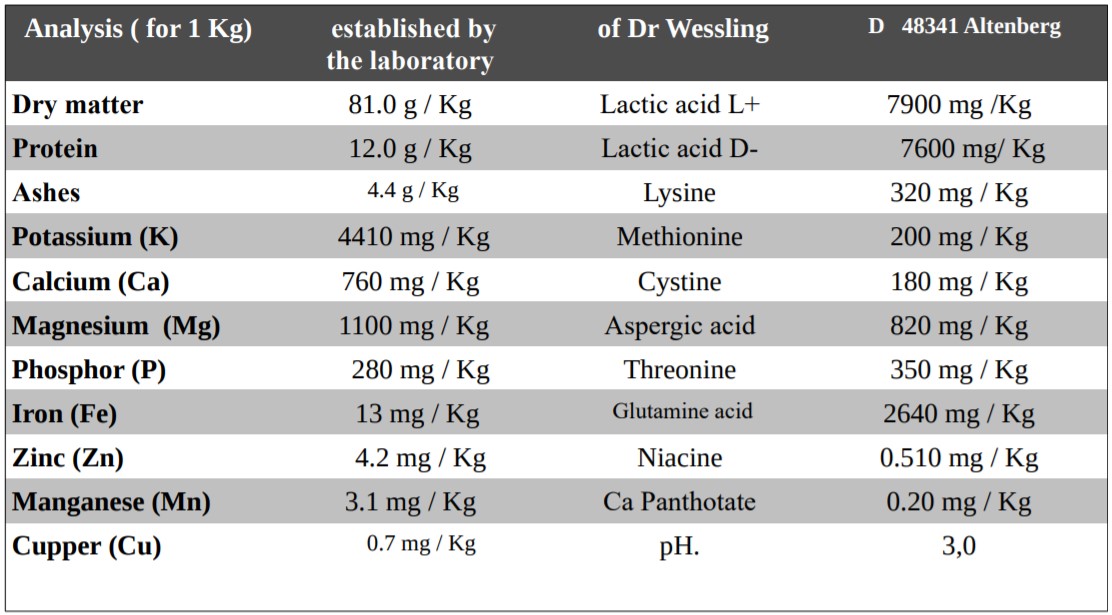
FERMENT OF ORGANIC CEREALES LIQUID FILTER
ENGRAIS FOR MINERALSOLUTIONS SOURCE NFU 42004
THE BROTTRUNK® fermented bread liquid for plants that we call here: BROTTRUNK-PLANTES, whose two balanced lactic acids D- and L- is tested and registered in Germany:
Pflanzenst-rkungsmittel: Biologische Bundesanstalt in Braunschweig on 29.10.2001
France: NFU 42,004 Class II compliant
It first acts in reseeding on the soils by the action of its lactic bacteria of cereals, these will occupy the place of undesirables who have proliferated following various treatments often repeated.
It then acts, on the leaf plant, always on the same principle of occupancy of the plant land and is suitable for both large cereal crops as legumes (potatoes and beets in particular) full vegetable crops. intensive greenhouses, as well as horticulture and arboriculture.
c) Regarding the tomato
It is recommended 20 ml/m2 (200l./ha) of Kanne-Flüssig in the first year in the greenhouse in preparation of rotavator soil as well as a reinforcement of 1 ml/BROTTRUNK Plants per foot drip per week throughout the growing and production period. These dosages are also valid for cucumbers, melons and peppers. You can also make a preparation of 1 l. per 1000l,or 1/1 of BROTTRUNK Plants per watering per week.
With regard to leaf treatments, he mentioned that treatments should always be measured according to the size of the leaf surface.
d) Regarding the salad
The treatments mentioned above have allowed it to control nematodes (which live in the very deep soil, in the second arable layer) at about 80% decrease of these predators, of course in a natural way.
He quotes on this subject, that the fine roots of salads can reach up to 1.20 m deep in the soil!
He observed that in leaf treatment, against tomato aphids, there is a proliferation of aphids at the first treatment because they have "impifened" Kanne and at the 2nd treatment, the following week, it is very surprising, only 10% are left they have virtually disappeared, which is why in its region Kanne is highly appreciated in organic production, because it is a natural treatment.
e) Analytical Constituents of the Drink Kan
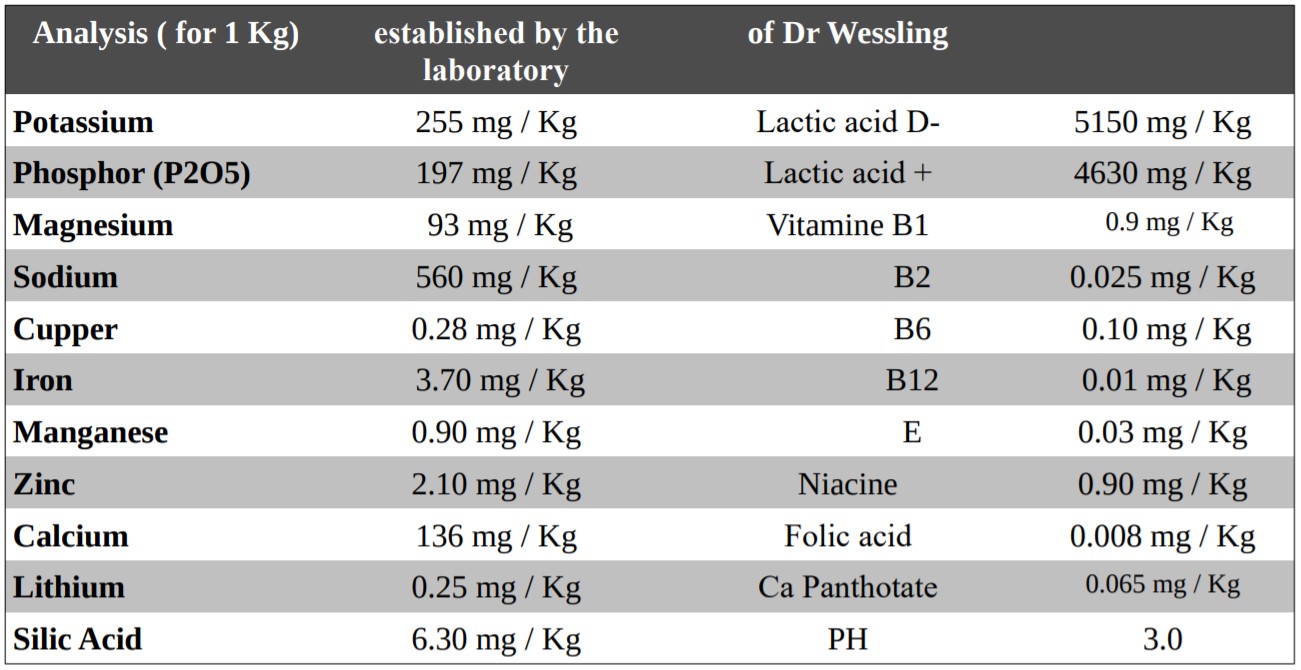
f) How to use it
For the Kanne Flüssig
On average: 25 to 100 l. of Flüssig to dilute in 400 l. of water and clearly depot
Classic dose: 100 to 250 l/ha (tired or polluted soils: up to 600 l/ha
Recommended dosages: Check the distributor's technical sheets according to the crop.
For the Brottunk-Plants
In order to seed the soil in non-vegetative periods:
4 liters/ha on the soil of DRINK-KAN Plants diluted in about 200 liters of water
At the start of the vegetation, i.e. in the spring at the end of the cold periods:
4 liters/ha of DRINK-KAN Plants on cultivated plants (same dilution)
This dosage was repeated up to 5 times during the growth phase with excellent results. The recommended 4 liters/ha will be diluted up to 400 liters of water added if necessary for proper distribution.
All preventive treatments used to strengthen the vigor of the growing plant will be dosed at 2% DRINK-KAN Plants and can be repeated every 4 to 6 weeks.
In arboriculture, it will also be used in non-vegetative period 4 l. of DRINK-KAN plants/ha
in autumn, after leaf fall and vegetative period in spring, 1 l. of DRINK-KAN.
Plants for 4 liters of water or 25% (do not spray during flowering: hinders pollination)
CONSERVATION: Store in a cool place, (maximum 35oC) protected from strong lights and frost.
PRESENTATION: 25 kg cans
Culture and Cereals
Wheat, Barley, Oats, Rice, Corn, Soybeans, Beets, Potatoes, Peas, Spelt, Millets, Saracens, Rye
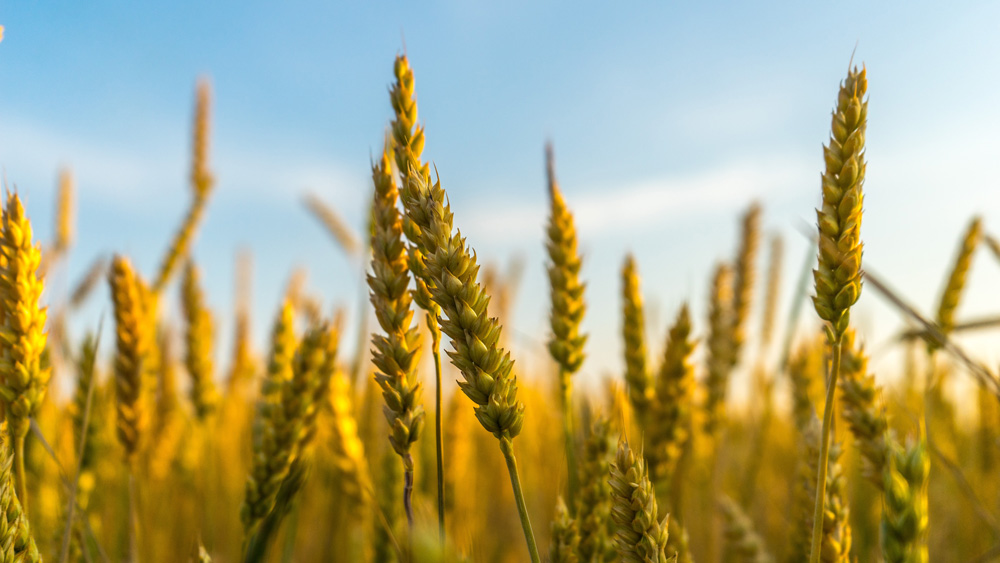
Botanically, cereals belong to the grass family. These plants, which originally grew in the wild, attracted human attention because of their floury grains. Over the millennia, grasses have been grown systematically, hybridized and selected to obtain our current cereals.
To obtain a healthy cereal, the grower must ensure that the soil contains a large number of microorganisms, i.e. it remains very active organically. The various activities must be very exactly given to each other: assoling, species choice, smoking, soil cultivation and plant health treatments. The methods are different depending on the mode of cultivation (intensive, integrated, organic).
The combination of crops, artificial grasslands and green manure on a patch of crops, artificial grasslands and green manure is particularly important: it allows the soil to regenerate and source organic matter. Prolonged wheat cultivation on the same plot could cause cryptogamic diseases.
Cereals can be categorized into two categories:
Breadable cereals: | autumn and spring wheat, rye, spelt |
Feed cereals: | summer barley and escourgeon, triticale, oats, feed wheat, corn |
Feed and panifiable cereals have the same nutritional value. The two categories are distinguished by their difference in quality, their more or less good ability to be ground or breaded and their price. Lower quality panifiable cereals are used as fodder.
Wheat, spelt and rye are considered breadable cereals because they contain insoluble proteins (gliadine and glutenin) that form gluten when mixed with liquid. This phenomenon allows the dough to have an elasticity and structure, it also allows the dough to retain the CO2 provided by fermentation.
Wheat
Wheat is a generic term that refers to several cereals belonging to the genus Triticum. They are annual plants of the grass or Poaceae family, grown in many countries. Wheat also refers to the grain produced by these plants.
Wheat is one of the three major cereals along with corn and rice. This is, with about 600 million tons annually, the third by the size of the world harvest, and, along with rice, the most consumed by man. Wheat is, in Western civilization and the Middle East, a central component of human food. It was domesticated in the Near East from a wild grass. Its consumption dates back to the highest antiquity. The first cultures appeared in the 8th century BC, in Mesopotamia and in the valleys of the Tigris and Euphrates (now Iraq), in the fertile Crescent region.
Spelt
The spelt (Triticum aestivum ssp. spelta), a subspecies of soft, grained wheat (which must therefore be dissected before grinding). The ear is elongated and the shelled grain is comparable to the soft winter wheat. The straw of the large spelt is very long and empty. It is longer and thinner than that of the larger wheats, but is considered more resistant to pouring than the straw of the latter. The leaves of the large spelt are smooth.
Rye
Rye (dry cereal) is an annual plant belonging to the genus Secale of the Poaceae family (grass), and grown as cereal or fodder. It is part of the straw cereal. It is a rustic cereal suitable for poor and cold land. Its culture is now marginal. Rye flour is sought after for bread making, especially for its dietary value. It is a flour whose gluten is less elastic than that of wheat and retains less moisture. The proportion of germ and its present in rye flour is high.
Corn
Corn (also known as Indian wheat in Canada) is an annual tropical herbaceous plant of the Poaceae family, widely grown as cereals for its starch-rich grains. This species, native to Central America and introduced to Europe in the16th century, is cultivated worldwide and has become the world's first cereal ahead of rice and wheat. Whole grain corn flour is an excellent source of magnesium, potassium and Phosphor.
Millet
Millet is a cereal. It is a major source of vitamins B1, B2, A and C, calcium, potassium, magnesium, silicic acid, sodium, fluorine and iron. Rich in fat and protein, it is with oats the cereal with the highest nutritional value. Another advantage: instead of being concentrated only in the outer layers, nutrients are distributed throughout the grain. Gluten-free, millet is one of our oldest domestic cereals and is highly appreciated by those who advocate a healthy and natural diet. Millet can replace most cereals.
Buckwheat
Buckwheat (Fagopyrum esculentum), also known as black wheat, is an annual plant, grown for its seeds consumed in human and animal feed. It is assimilated to cereals although it is part of the polygonaceae family (sorrel, rhubarb...). The seeds are transformed into flour used to make pancakes, patties. Buckwheat is one of the best and easy-to-digest sources of plant protein.
Oats
Cultivated oats are an annual plant belonging to the genus Avena of the Poaceae family (graminés), and grown as cereal or fodder. It is part of the straw cereal and is used mainly in animal feed (especially equines). Oats are a cleansing plant of some unwanted gramines and the following year it allows these herbs to be better controlled over legumes (potatoes and beets) the following year.
Amarante
Also gluten-free, amaranth is not strictly speaking a cereal, but it is used as such. She is part of the [Amaranthaceae] family. Rich in vitamins A and B, folic acid, vitamin C and minerals such as calcium, iron, copper, magnesium and Phosphorus, the full range of essential amino acids is found in very balanced quantities. It contains twice as much iron and four times as much calcium as durum wheat.
Amaranth flour makes pastries wetter and sweeter, used to make cookies, pancakes or waffles, combined with wheat flour to make breads and cakes raised. Amaranth seeds are cooked like any cereal.
Rice
Rice (Oryza sativa) is a cereal, plant of the grass or poaceae family grown in tropical, subtropical and temperate regions warm for its seed, or caryopse, rich in starch. A fundamental part of the diet of many people around the world, especially in Asia and Africa, rice is the world's leading cereal. It is the basis of Asian cuisine: Chinese, Indian in particular. Rice is grown in warm tropical, subtropical and temperate regions (Africa, Asia). It is also grown in Europe, Italy (Po plain), Spain, Russia, Greece, Portugal, France (Camargue), Ukraine, Bulgaria., Rice is grown either in dry or flooded crops, in rice fields, periodically drowned land underwater.
It can be white (China, India, France), brown (China), yellow (Iran), purple (Laos), gooey (China, Laos).
100 g of white rice contains about 350 Kcal, or 1463 Kjoules. Rice is rich in glucides and protides, but low in fat. It also contains many mineral salts necessary for growth.
Rice Culture with the Kanne Plant
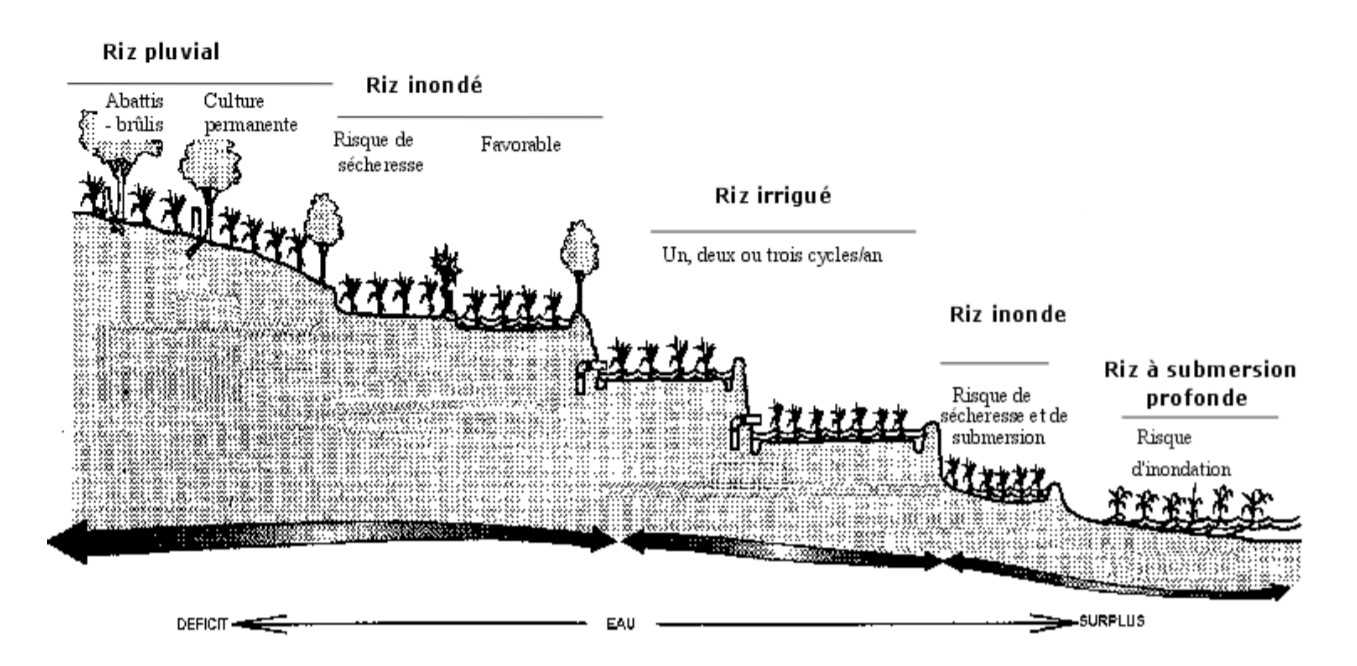
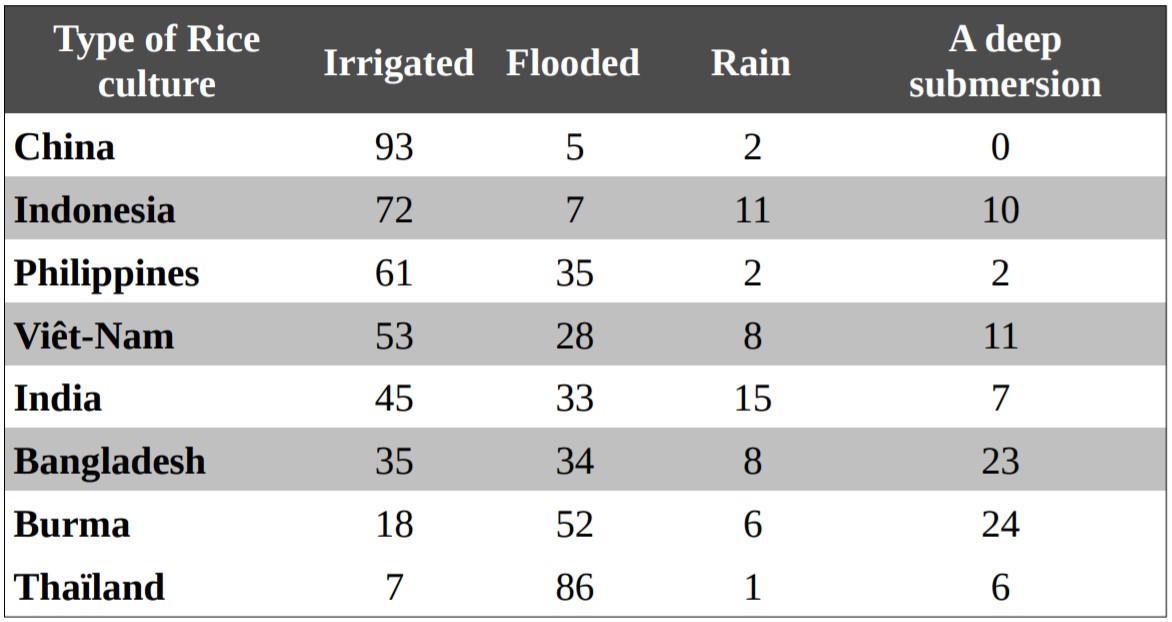
a) Irrigated rice farming
Low efficiency in the use of chemical inputs applied in high doses. It is generally considered that less than a third of the nitrogen fertilizer applied to the rice paddy is actually used by the plant and this rate still tends to decrease in irrigated rice fields at very high productivity which causes environmental degradation. In addition, much of the insecticide applications still in use are economically unnecessary, environmentally harmful and dangerous to health.
b) Rain-fed rice farming
Many limiting factors explain the low physical and labour productivity observed in traditional rain-fed rice cultivation. Yields are close to 1 to 1.5 ton of paddy per hectare (lower in South Asia - 0.8 ton in India and Bangladesh - than in Southeast Asia with 1.6 ton in Indonesia and northern Thailand). The most common agronomic stresses in rain-fed plots are:
Weed competition for water, light and nutrients during
First months of culture.
Water stress caused by periods of drought, especially during flowering.
The high risk of soil erosion in wetlands and steep soils during the first months of the crop ping. In terms of erosion, Kanne could have all its value.
The acidity of the land and their low availability of assimilable Phosphor, a widespread problem in Indonesia and especially in Sumatra.
Damage caused by rodents (northern Laos), birds (when early varieties mature) and wildlife in general (Laos, Sumatra, Bhutan). We have the same problem in France with pink flamingos
Pyriculariosis and root infestation by nematodes or insect larvae. Could be stopped by the spread of Kanne bacteria
Low temperatures, especially at flowering (in Nepal and Yunnan where 90% of the rain-fed rice is grown at an altitude of more than 1,000m), etc.
Beyond these multiple constraints in the field, the prevailing economic dynamics and environmental concerns in Asia will not allow rain-fed rice to play a significant role in increasing future rice production in this area. Continent.
c) Flooded rice farming
Flooded rice is grown with very imperfect water control during a single wet season cycle, in dammed traps of generally small size and more or less submerged (never more than 50 cm of water for more than ten days) during part of the cycle of culture. Either the surface water table is low and the flooded sub-ecosystem is characterized by a high risk of temporary water deficit, especially when the rice is flowering, or the thickness of the submersion is higher and this is the risk of flooding culture that is dominant with more devastating effects if they occur at the beginning of the crop cycle.
d) Deep-submersion rice farming
The only annual rice crop cycle is usually planted by direct seeding of unpre-germinated paddy after a simplified preparation of the soil in uncontained plots where the passage of the tractor or the motorbike and the disc plow is facilitated by the absence of dikes. Elsewhere, rice is planted by transplanting old plants into a thick water blade.
Three sub-ecosystems can be distinguished:
Deep-submersion rice farming with a water blade 50 to 150 cm thick for at least one month of the growing cycle;
Floating rice found in areas where submersion can reach more than 5 meters deep at the height of the flood;
Rice from tidal-beating coastal areas that can tolerate short periods of deep submersion in brackish water and for which tolerance to salinity is one of the essential adaptations.
The main field stresses experienced by this rice crop explaining this low productivity are mainly due to the unfavourable characteristics of soils (high acidity, salinity, peat soils or acidic sulphates, ferrous toxicity, or Phosphor, zinc, etc.) deficiencies and unpredictable combinations of short periods of early-cycle drought followed by deep and sudden floods at a later stage of the crop ping.
About 70% of the areas classified as deep-sea rice crops are still the subject of traditional exploitation characterized by the hard work of farmers in this flood-like environment. This is particularly the case in Cambodia, where this rice ecosystem still covered some 110,000 hectares in the early nineties, or about 7% of the country's rice fields.
e) Current state of mineral ferment use
The effectiveness of the high use of mineral fertilizers applied to irrigated rice (an average of 300 kg of nitrogen per hectare in China) must be improved to limit the risk of nitrate pollution of groundwater and eutrophication of streams, as well as to increase the producer's profit margin. Splitting fertilizer inputs guided by the observation of foliage colour and a standard plank with a range of greens to help dose the applications increases the efficiency of the use of nitrogen mineral fertilizer from 15 to 25 kg of paddy per kilogram of nitrogen brought.
Kanne will prevent large intakes of nitrogen, the negative impacts of which are well known.
f) Pesticides
In the early nineties, more than a quarter of the world's pesticides were applied in Asia, where 40% of the active ingredients were applied in rice fields. However, several studies have shown the low (or even negative) ecological efficiency and economic profitability of most pesticide applications in irrigated rice fields while highlighting their harmfulness to the health of rice farmers and their families, the quality of water and the survival of populations of organisms useful in rice fields.
g) The Kanne
Hopes for significant improvement in rice crops relate to the combined use of biotech tools such as KANNE PLANTS.
This progress will need to be combined with agronomic practices that improve the recovery of water resources and a gradual improvement in the fertility of land, especially its chemical component, in terms that are locally adapted in this very heterogeneous agro-ecosystem, or for example KANNE thanks to its adaptability to the ecosystem will be able to strongly compensate for the anomalies in the field.
| Tillering | Epiaison | Harvest |
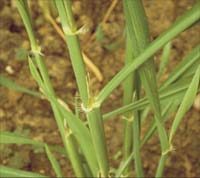 | 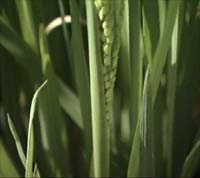 |  |
The Kanne plant can improve the micronutrient content of rice. Micronutrient deficiencies are widespread in Asia.
For example, the risk of childhood blindness caused by vitamin A deficiency would affect 190 million children of pre-school age and about 350,000 of them would go blind each year.
Iron deficiency is also a widespread cause of anaemia that affect large female populations in Asia, so improving the basal grain content of trace elements can help reduce the acuity of such nutritional problems, especially if the rice is consumed in its "complete" unbleached form.
Kanne-Plants, due to its natural composition of minerals-vitamins and trace elements perfectly assimilated by the plant will correct these deficiencies or imbalances and the recommended method will be depending on the type of cultivation.
Knowing that the development of the action of lactic bacteria of Kanne-Plants cereal origin finds its best ally in wetlands, it is obvious that the best way to grow will be conditioned by the ambient humidity.
Regarding our experiences of using Kanne-Plants on cereal crops, we can admit that growing irrigated rice will be the best option to know its effectiveness while knowing that in rain, flood and deep submersion, trials will better meet our current knowledge of this culture.
We experimented in nursery cabbage plants at the largest Alsatian producer of organic sauerkraut that the methodology was to put the plants in bins of 2,000 liters of water (5 cm high) to which we added 2 or 2 liters of Kanne-Plants per week until planting, we found an excellent robustness and a total absence of diseases, which will strengthen us in the nursery.
In cropping ways we offer the same methodology as on other cereals, Rice :
1. 15 l / ha of Flüssig in soil preparation
10 l / ha in corn cob 1 cm
10 l / ha in Epiaison
2. without soil preparation with Flüssig
20 l / ha during the period of tillering
20 l / ha during Epiaison
Peas
Made from dried chickpeas, this flour is used to make doughnuts, pastries, unraised breads and patties. Sometimes used to thicken sauces, it occasionally enters the preparation of battered pasta. Inexpensive, it has long been a preferred source of protein and minerals in Indian cuisine.
Potatoes
Potatoes are a plant whose stems are eaten in a tuberous nature. The roots grow from it in an adventist way.
Barley
Common barley (Hordeum vulgare) is a straw cereal. It is therefore an annual herbaceous plant of the poaceae family. It is the oldest cereal grown. Barley is characterized by its ears with long beards.
Barley, a secondary cereal, is an important energy resource in animal feed (milling barley) but low in protein and requires completion.
In human food its main outlet is the brewery. The sprouted and roasted barley gives the malt, whose fermentation product is beer. The maltsters are demanding in terms of calibration and protein content which must remain low. It is the spring varieties that have their preference
Pearl barley can be used in mixed salads, with vegetables, or added in soups.
Global distribution of different cereal species (2004):
Wheat: 28% Rice: 27% Corn: 31% Barley: 7% Millet: 4% Oats: 1%
For Culture and Cereals we recommend Kanne Flüssig.
The Kanne Flüssig bread fermented from the three cereals that are: wheat, rye, oats acts on crops as on soils by the action of its lactic bacteria of cereals.
The two balanced lactic acids D- and L- were tested and registered in Germany: Pflanzenst-rkungsmittel: Biologische Bundesanstalt in Braunschweig on 29.10.2001
France: Complies with NFU Standard 42,004 Class II.
The benefits of Kanne Flüssig are numerous on crops and in all latitudes for rice, soybeans, wheat etc. It is a certified organic product that allows you not to use pesticides or chemical fertilizers. The lactic bacteria of cereals, will occupy the place of undesirables who have proliferated following various treatments often repeated.
This increases yields, with higher quality and stronger grains while respecting soils, thus avoiding erosion.
By certifying organic farming with the right to bear the new logo: "EUROPEAN BIOLOGIC AGRICULTURE" KANNE products are allowed in organic farming, red label production, regional certifications and other traceability requirements, in addition, cereals used in the manufacture of KANNE® are certified in each campaign for no G.M.O.
Organic product that prevents the use of chemical fertilizers or pesticides.
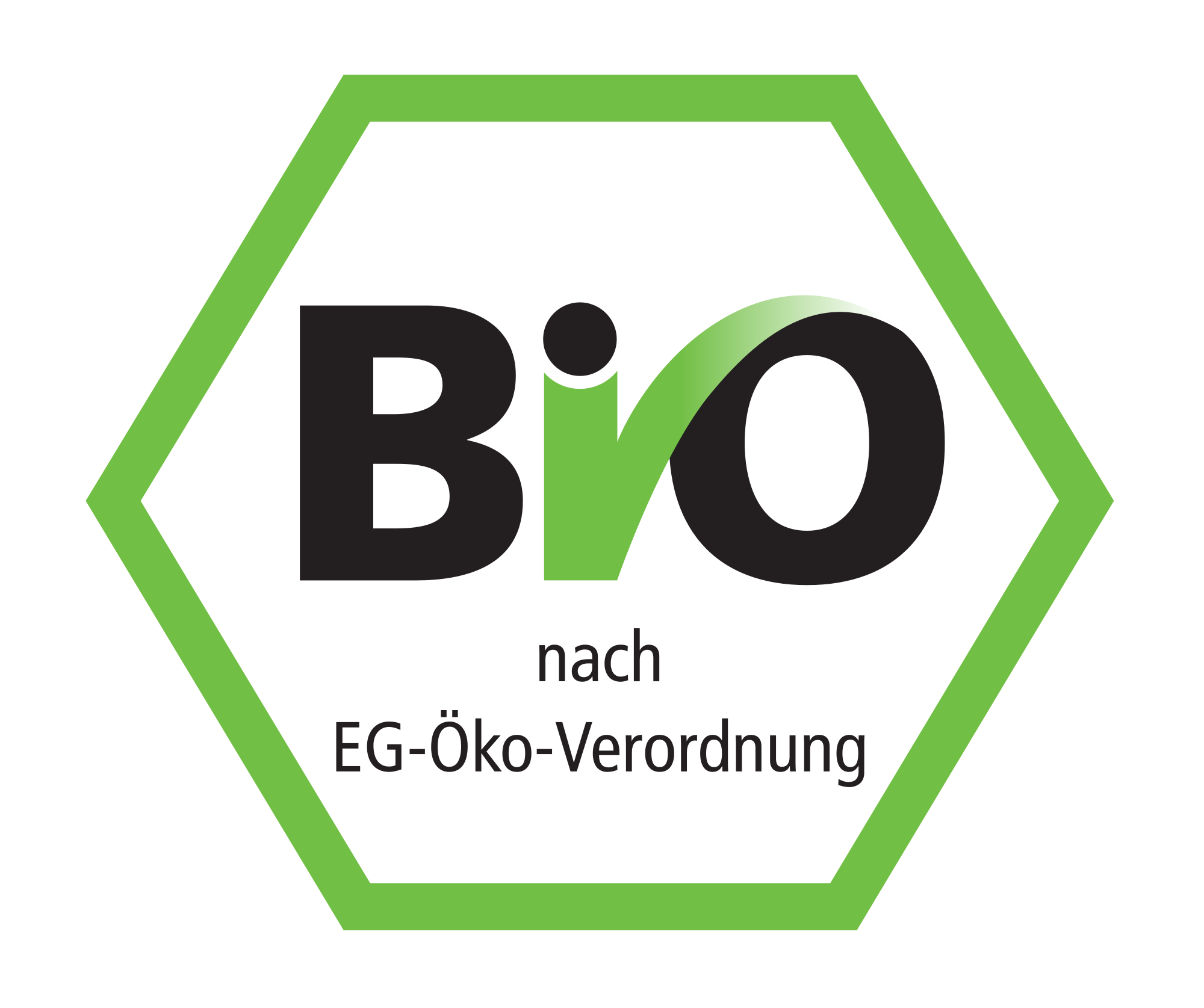
a) Analytical Constituents

b) How to use it

Horticulture
Plants for food, Pleasure plants
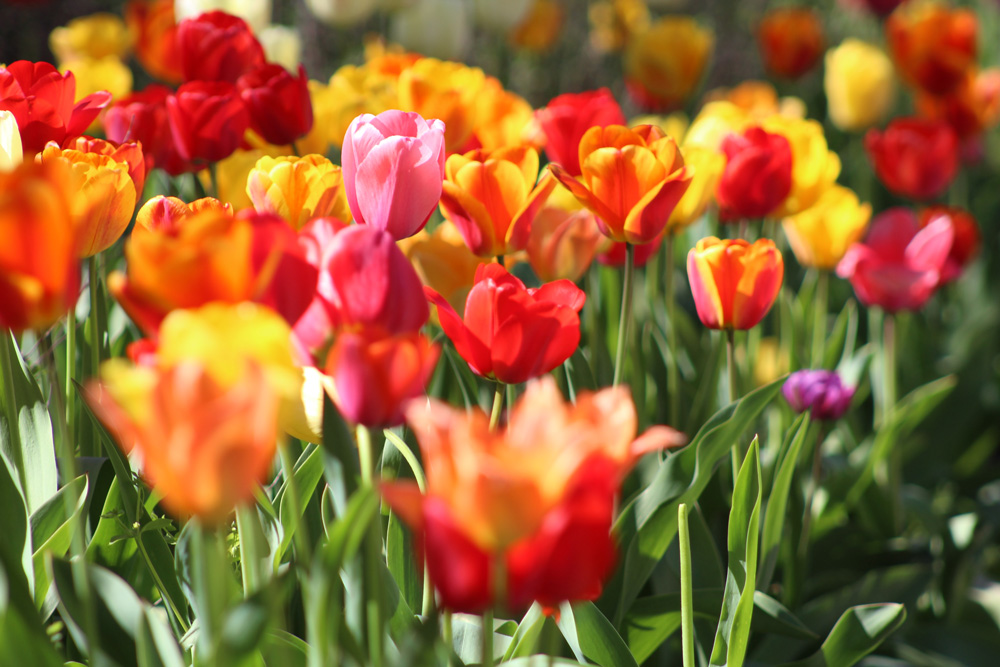
Horticulture refers to the professional branch of agriculture devoted to the intensive production of plants for food or amenity planting in public or private gardens. It's kind of producing a maximum on a minimum surface. The term was formed on Latin hortus, garden. Horticulture opposes agriculture in the sense of extensive field cultivation (ager, the field). It is to produce a maximum on large areas.
Environmental aspects
It is double, with;
Positive:
Some believe that the cultivation of orchids (including cloning) or other rare species has helped to limit direct removal from the wild and to save some species.
It is an important source of employment for developing tropical countries.
Negative or Controversial Aspects:
Some floricultures use a lot of chemical inputs and pesticides[1], which have environmental and health impacts on flower growers, upstream, and possibly downstream. For some species, their diffusion may be the cause :
Genetic pollution.
Loss of biodiversity, by consumption of natural spaces and use of increasingly homogeneous, often cloned strains.
Mortality of bees, butterflies or other insects and their larvae attracted to plantations, and exposed to insecticides.
Introduction of species that may become invasive or pose a problem (resistance to pesticides), especially with long-distance transport by air and/or trucks.
A large number of plant diseases: market gardening, arboriculture or viticulture reside in the soil and it is here that they must be attacked in order to have lasting results, without ever forgetting that the rehabilitation of a soil requires several years of perseverance.
For Horticulture we recommend Kanne Flüssig on the ground.
For watering the Flowers, Plants we recommend the Bottrunk Plants.
It should also be noted that Kanne treatments are 100% natural long-term treatments, which means that in the first year, dosages should always be higher, as they are dosages of attack and regeneration of pathological soils (pH - 8.0 or 8.5.) In the garden of Lenen, the Kanne Flüssig has been in use for more than 10 years now and the average dosage is currently 10 ml/m2 whereas we started at 70 ml/m2! The pH is also restored between 6.5 and 7.2 and the soil structure has become permeable since the regular use of Kanne.
It is strongly advised not to force the use of fertilizer with the use of Kanne it is better to stay in standards below the usual dosage without Kanne. Never 10% Kanne and 90% fertilizer, he recommends preferably 10%-10% of each.
THE BROTTRUNK® fermented bread liquid for plants that we call here: BROTTRUNK-PLANTES, whose two balanced lactic acids D- and L- is tested and registered in Germany: Pflanzenst-rkungsmittel: Biologische Bundesanstalt in Braunschweig on 29.10.2001
France: NFU 42,004 Class II compliant
It first acts in reseeding on the soils by the action of its lactic bacteria of cereals, these will occupy the place of undesirables who have proliferated following various treatments often repeated.
It then acts, on the leaf plant, always on the same principle of occupancy of the plant land and is suitable for both large cereal crops as legumes (potatoes and beets in particular) full vegetable crops. intensive greenhouses, as well as horticulture and arboriculture.
a) Analytical Constituents of Flüssig
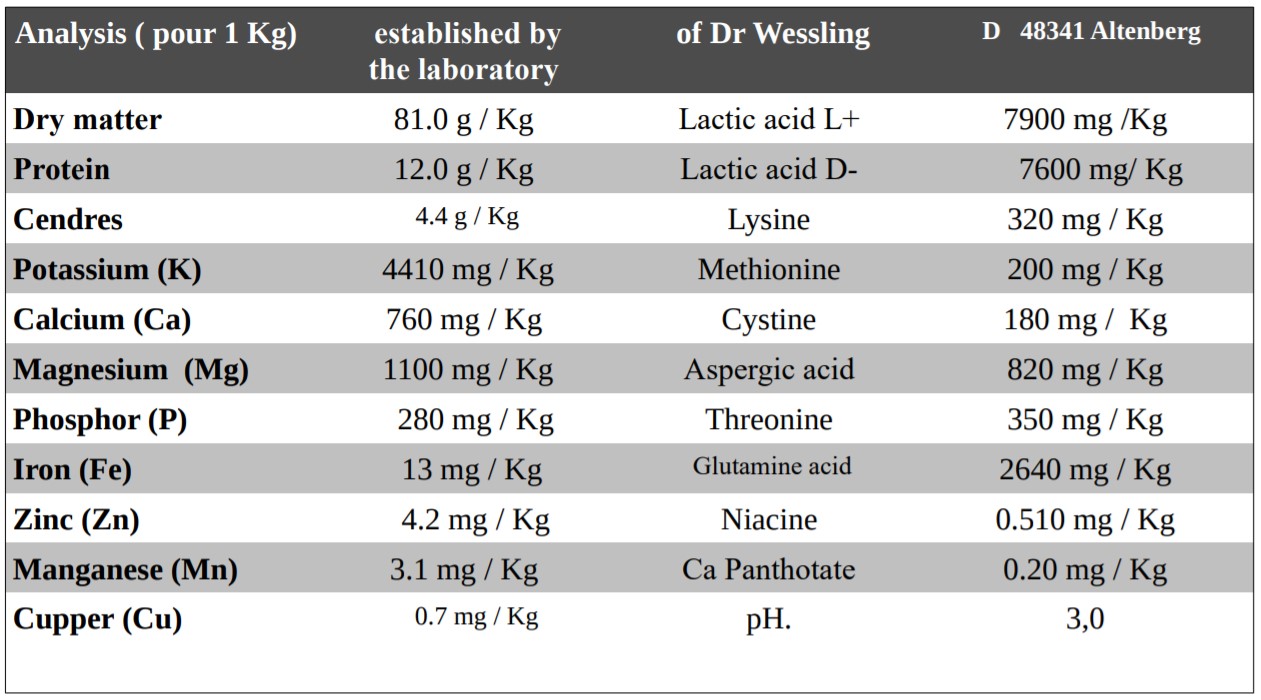
Leaf treatments only after the third leaf will of course be carried out with Brottrunk Plants. They will be more effective split into small dosages e.g. if you want to do a leaf of 30 l./ha/month, it will be preferably 3 times 10 times per ha 10 days apart.
b) Analytical Constituents of Brottrunk Plants
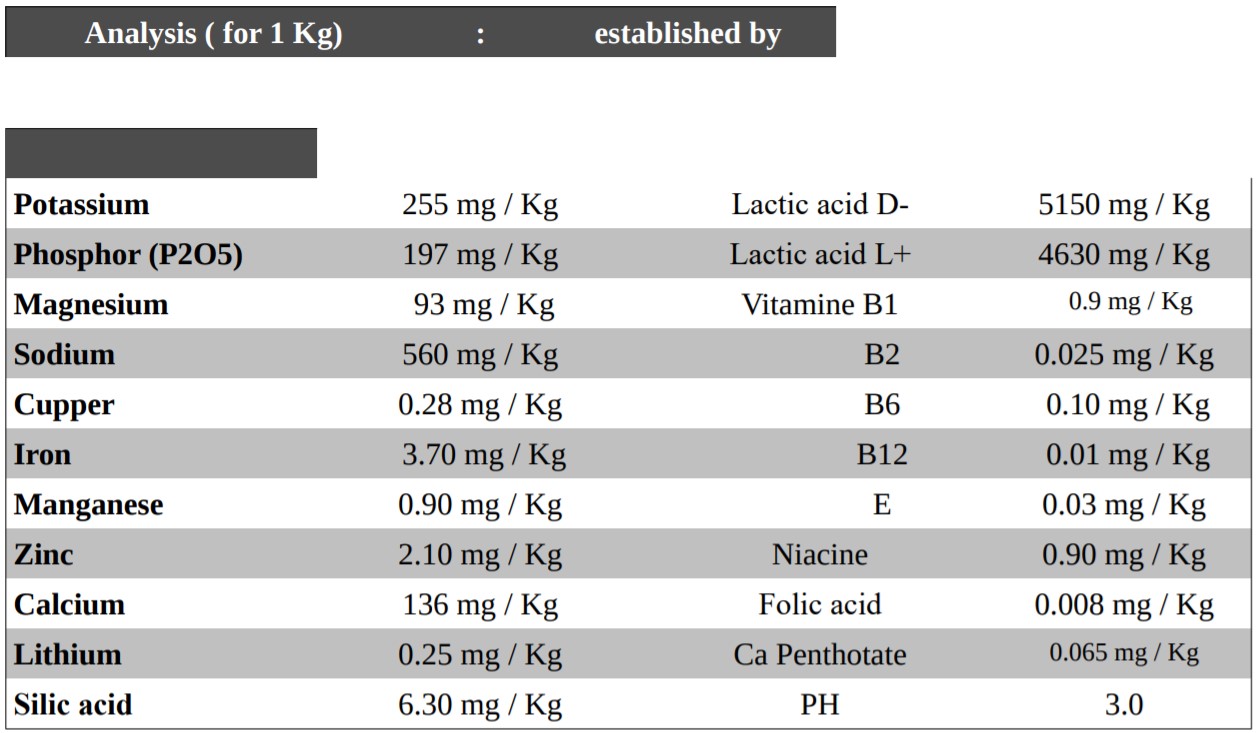
c) How to use it
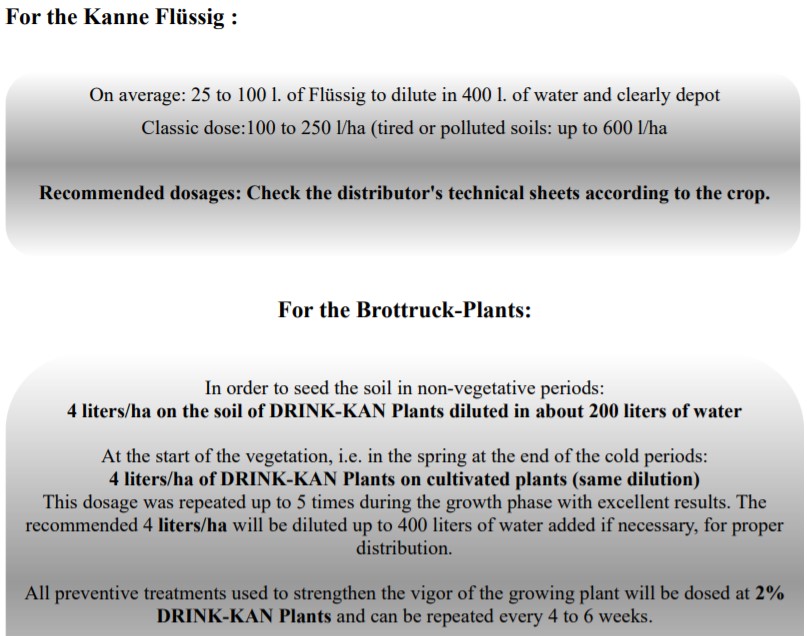
Arboriculture
Mouth fruits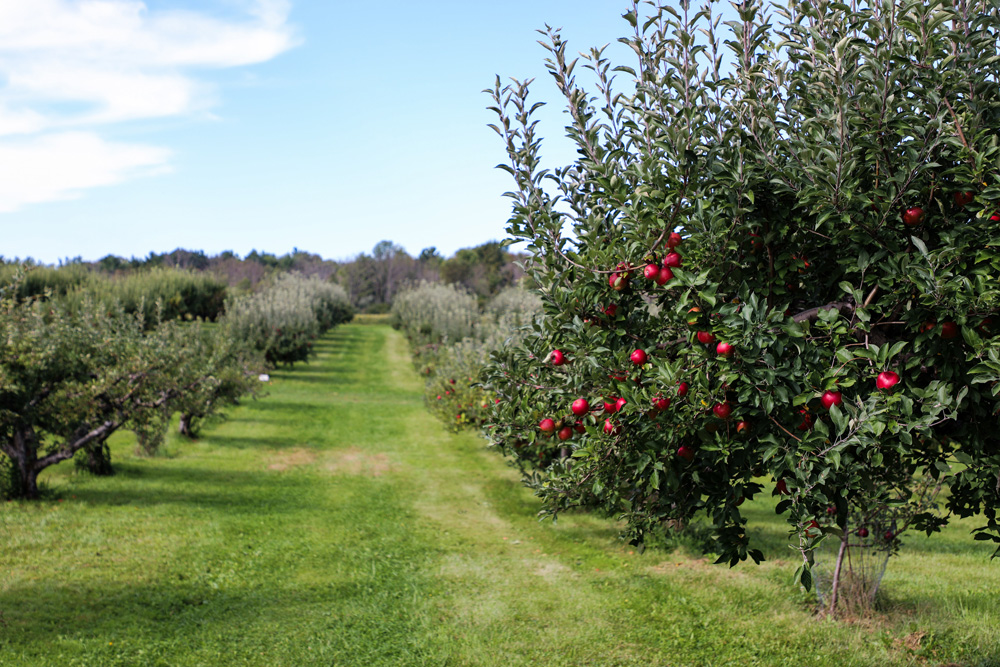
Arboriculture refers to the human activity of cultivating trees.
The discipline includes the study of plant physiology, how trees respond to their environment and different maintenance techniques.
Fruit arboriculture is a branch of the arboriculture that specializes in growing fruit trees in order to harvest the fruits.
It dates back to the earliest known antiquity: in ancient China, peach and plum trees were cultivated in Mesopotamia, pergolas of vines and fruit trees formed garden fences.
In the Middle Ages, monasteries had an orchard planted with fruit trees and shrubs under which the monks were buried. Apple stobys, pear trees, peaches, vines brought by the Romans, the capitulare De Villis attributed to Charlemagne gives a list of 16 essential fruit trees.
Classification of fruit trees:
Core trees: apricots, cherry, peach, plum trees.
Seed trees: apple, pear, cognassiers.
Almond trees: almond, hazelnut, walnut trees.
Others: raspberries, Kiwis, gooseberries, fig trees.
The ideal soil for planting a fruit tree consists of:
70% sand.
20% clay or silt.
5% humus.
2 to 5% active limestone.
It is important that during planting, the graft point of the tree is at least ten centimetres above ground level.
For Horticulture we recommend Kanne Flüssig on the ground.
For watering the Flowers, Plants we recommend the Bottrunk Plants.
Information on the use of the Kanne Flüssig ferment.
It should also be noted that Kanne treatments are 100% natural long-term treatments, which means that in the first year, dosages should always be higher, as they are dosages of attack and regeneration of pathological soils (pH - 8.0 or 8.5.) In the garden of Lenen, the Kanne Flüssig has been in use for more than 10 years now and the average dosage is currently 10 ml/m2 whereas we started at 70 ml/m2! The pH is also restored between 6.5 and 7.2 and the soil structure has become permeable since the regular use of Kanne.
It is strongly advised not to force the use of fertilizer with the use of Kanne it is better to stay in standards below the usual dosage without Kanne. Never 10% Kanne and 90% fertilizer, he recommends preferably 10%-10% of each.
The BROTTRUNK® fermented bread liquid for plants that we call here: BROTTRUNK-PLANTES, whose two balanced lactic acids D- and L+ is tested and approved in Germany: Pflanzenst-kungsmittel: Biologische Bundesanstalt in Braunschweig on 29.10.2001
France: NFU 42,004 Class II compliant
It first acts in reseeding on the soils by the action of its lactic bacteria of cereals, these will occupy the place of undesirables who have proliferated following various treatments often repeated.
It then acts, on the leaf plant, always on the same principle of occupancy of the plant land and is suitable for both large cereal crops as legumes (potatoes and beets in particular) full vegetable crops. intensive greenhouses, as well as horticulture and arboriculture.
a) Example on the Cherry
Of the problems of rot on some fruit trees and especially the cherry tree, the following dosage is advised:
Assuming that on the ground surface, this tree occupies about 4 m by 5, or about 20 m2 per cherry tree, we recommend 2l. per tree in ground spraying, the recommended preparation being 500 l. of water per 100 l. of Kanne would give us 500l. to spread for 50 cherry trees. We advise to do so before cold periods.
This treatment aims to sanitize the soil, so the root and the recurrence of this treatment in early spring with the same dosage would seem appropriate.
b) Analytical Constituents of the Kanne Brottrunk

A leaf treatment with Brottrunk Plants dosed at 20 l. per 100 l. of water is pre-connized on the new leaves.
c) Analytical Constituents of the Brottrunk Plants
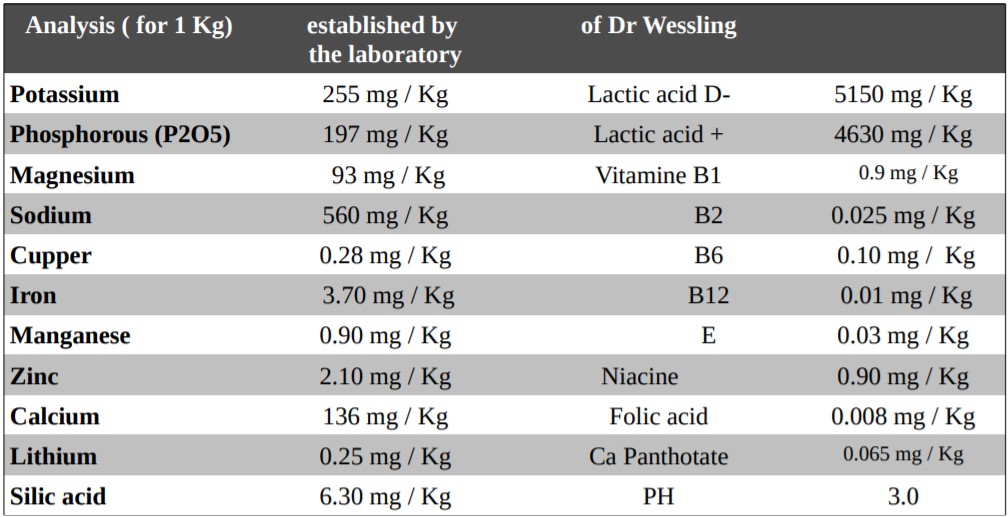
d) How to use it
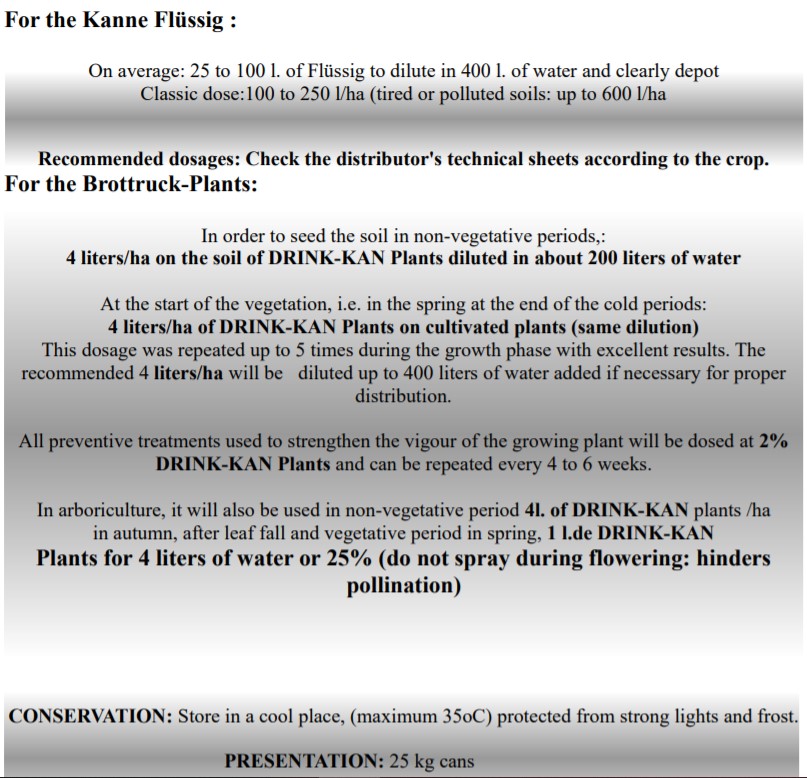
Viticulture
Wine, Grapes, Dry Grapes

Viticulture is an agricultural activity consisting of growing vines in order to produce grapes.
These grapes can be eaten as fresh fruit (table grape) or dried (raisin) or pressed to make grape juice or wine by alcoholic fermentation (vinification). In the latter case, specific grape varieties of vat grapes are used.
The influences of the terroir on vines, grapes and wine are the result of ecological factors (themselves related to geology, pedology, landscape and regional climate), or biological (grape and rootstock), as well as human factors.
The vines are sarmens of the Vitaceae family These are plants of the genus Vitis widely cultivated for their fruit in clusters, the grape, from which one draws a juice, the must, which becomes wine after fermentation.
Ground work: The tillage is practiced for;
Avoid or limit the growth of so-called "weed" advantices;
Preserve soil richness by limiting erosion;
As an alternative to the use of certain pesticides;
Channel the vine to allow it to draw its resources deeper by destroying the superficial roots.
Better wine quality and better watching
The agricultural machinery used are mainly: - the claw (in winter), to "break" the soils deep and promote rooting, - the "Actisol", to scrape the soil superficially and get rid of weeds, - the intercept (attached most time to actisol) to do the same job but between each foot (inaccessible with other tools).
Faced with increasing soil degradation and settlement, however, winemakers are increasingly resorting to controlled grassing, which better protects the soil and even helps to restore it (reappearance of humus). (We deliberately sow between the rows in order to preserve the soils from erosion and give free rein to a more natural ecosystem).
This technique allows:
To preserve the ecosystem and soil richness by severely limiting erosion;
Avoid the use of weed killers;
Maintain a milder microclimate in the vine;
To invite the roots of the vine to fetch water and certain nutrients in depth, without traumatizing them by plowing or scratching.
Organic materials:
Organic matter is not directly a food for the plant. It brings to the ground elements essential to its fertility. It must be buried in the first few centimetres of the soil (mechanically or by earthworms and soil microorganisms), so that it can always decompose in the presence of a little oxygen. It can be of animal origin (feces, feathers, shells.) or (and above all) plant. Animal matter is rather to be considered as a fertilizer providing mainly nitrogen. Except in the case of BRF (Fragmented Raméal Wood), Plant matter must come from "mature" (i.e. linenified) and fermentable plants (plane leaves or rice straw, for example, do not make good inputs, because very little fermentable). In the past, vine pruning was left at the feet of the vine where they enriched the soil, which is now avoided for fear of the risk of maintaining a potential source of pathogens near the vines.
Restitution needs are based on soil type, biological richness and climate. The average is the equivalent of 5 to 15 tons of manure per year per hectare for maintenance.
Mineral elements:
The requirements are calculated in "units" (or kilos), which represent kilos of the indicated element, for one hectare per year. Example: 50 units of an "x" element can be brought per 100 kg of a fertilizer containing 50% of that element, or by 500 kg of a fertilizer containing 10%. The quantities are expressed either in pure element (case of nitrogen, -N-), compound, oxide or other (case of phosphates -P2O5- or potash -K2O-)
Quantities are expressed in grams in the case of trace elements, whose needs are much smaller.
Approximate annual requirements
For one hectare of "average" vines:
20 to 70 "kilos" of nitrogen;
10 to 20 "kilos" of phosphoric acid (P2O5);
30 to 80 "kilos" of potash (K2O);
60 to 120 "kilos" of calcium (CaO);
The four elements above are called main, or major, elements.
10 to 25 "kilos" of magnesia (Mgo), an element called "secondary";
For Viticulture we recommend Kanne Flüssig on the ground.
For watering the Vines we recommend the Bottrunk Plants.
A large number of plant diseases: market gardening, arboriculture or viticulture reside in the soil and it is here that they must be attacked in order to have lasting results, without ever forgetting that the rehabilitation of a soil requires several years of perseverance.
For the vine, the Flüssig should be used as mentioned above for cherry, i.e. before the cold at a rate of 50 to 100 l./ha in the first year, the dose of 100l. 500l of water is correct for a good distribution but in high gradient terrain, you can concentrate more.
This method also aims to restore the soil/plant balance but the dosage of 50l. in the autumn and 25 l. in March is also recommended.
Kanne Flüssig first reseeding on soils by the action of its lactic cereal bacteria, the latter will occupy the place of undesirables who have proliferated following various treatments often repeated.
a) Analytical Constituents du Kanne Brottrunk

Leaf treatments only after the third leaf will of course be carried out with Brottrunk Plants.
They will be more effective split into small dosages e.g. if you want to do a leaf of 30 l./ha/month, it will be preferably 3 times 10 times per ha 10 days apart.
THE BROTTRUNK® fermented bread liquid for plants that we call here: BROTTRUNK-PLANTES, whose two balanced lactic acids D- and L+ is tested and registered in Germany: Pflanzenst-rkungsmittel: Biologische Bundesanstalt in Braunschweig on 29.10.2001
France: NFU 42,004 Class II compliant.
b) Analytical Constituents du Brottrunk Plants

By certifying organic farming with the right to bear the new logo: "EUROPEAN BIOLOGIC AGRICULTURE" KANNE products are allowed in organic farming, red label production, regional certifications and other traceability requirements, in addition, cereals used in the manufacture of KANNE® are certified in each campaign for no G.M.O.
c) How to use it
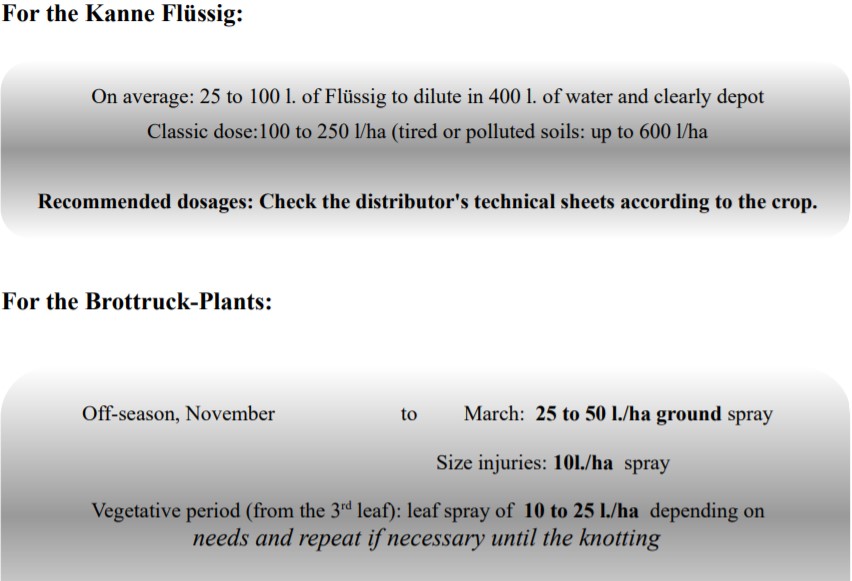
In treatment for the Environment and the Depollution
Muds and Lagoons
Water treatment, Lagooning
Water and Ponds
Rehabilitation of poor waters,
Polluted waters
Hydrocarbons
Fuels Diesel, Gasoline or other Chemicals
For water purification, rehabilitation of poor water or hydrocarbon treatment on polluted soils, Kanne Flüssig is also recommended because it restores the soils to their primary characteristics, as well as the re-oxygenation of water or lagoons.
Copyright Fulmina Foundation
Powered by Froala Editor
